ier to design staple, and for good reason: the inky hue offers unmatched depth, pairs effortlessly with a spectrum of materials, and hides everyday scuffs far better than pale finishes. Trend forecasters note that 2025 kitchens lean into contrast—mixing textures, metals, and countertop tones—to keep the dark cabinetry feeling lively instead of heavy. Below you'll find twenty focused ideas, each one a 100-to-120-word roadmap for turning the black-cabinet dream into a functional, personality-packed reality.
1. Matte Black Cabinets: Soft Elegance Without the Shine
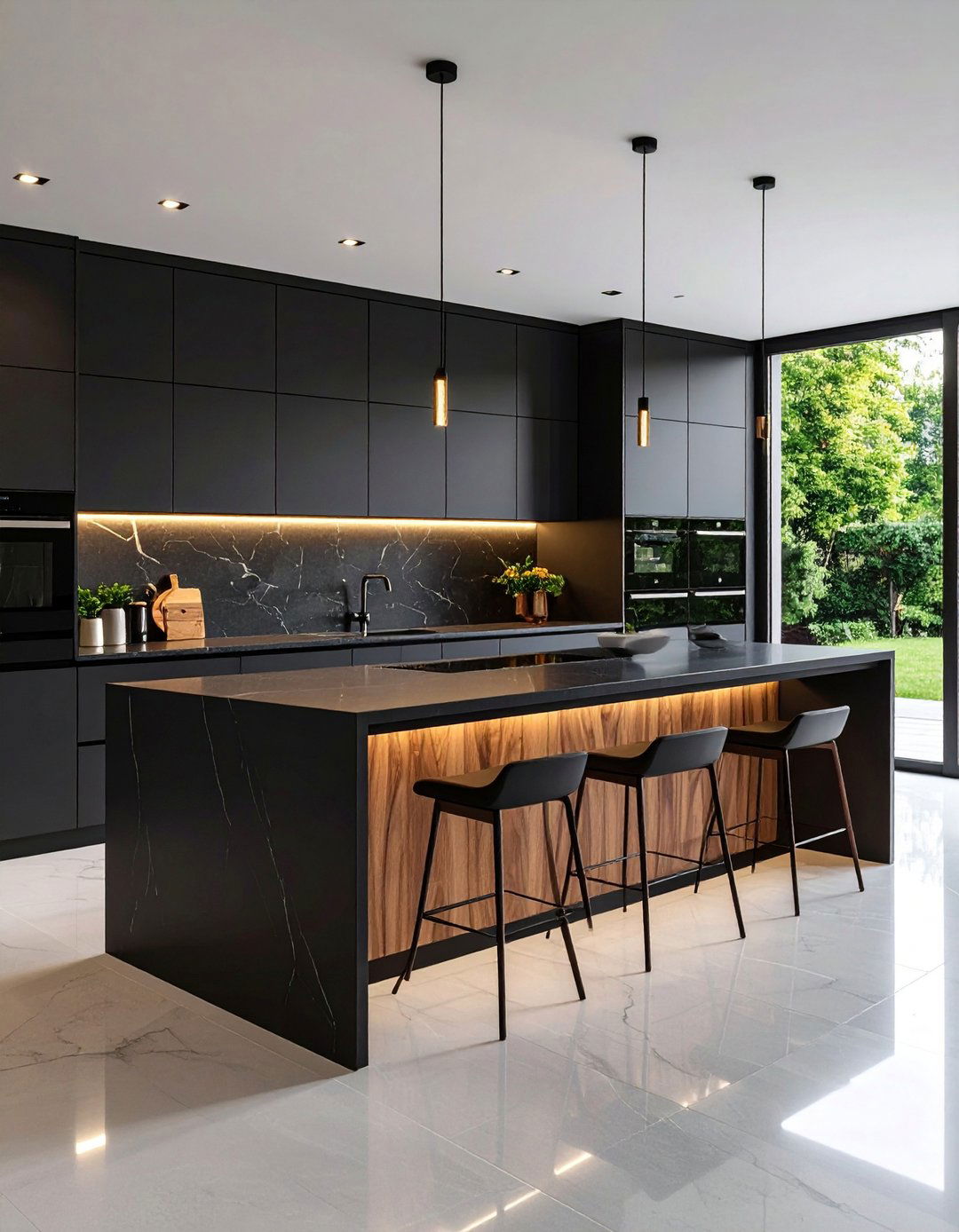
A velvety, light-absorbing matte finish instantly modernizes any black kitchen cabinet, delivering chic drama without the glare that glossy lacquers sometimes create. Because the surface diffuses reflections, fingerprints and micro-scratches stay largely invisible, making the style practical for busy households. Add subtle texture by choosing a super-matte acrylic or nano-coating that resists smudging. Pair the doors with ultra-thin stone countertops to underscore the cabinets’ smooth lines, and introduce one natural element—think a walnut bar stool—to soften the monochrome palette. Keep upkeep simple: wipe with a cotton cloth and pH-neutral cleaner rather than abrasive pads to preserve that “soft noir” allure for years.
2. Warm Wood Accents Temper the Darkness
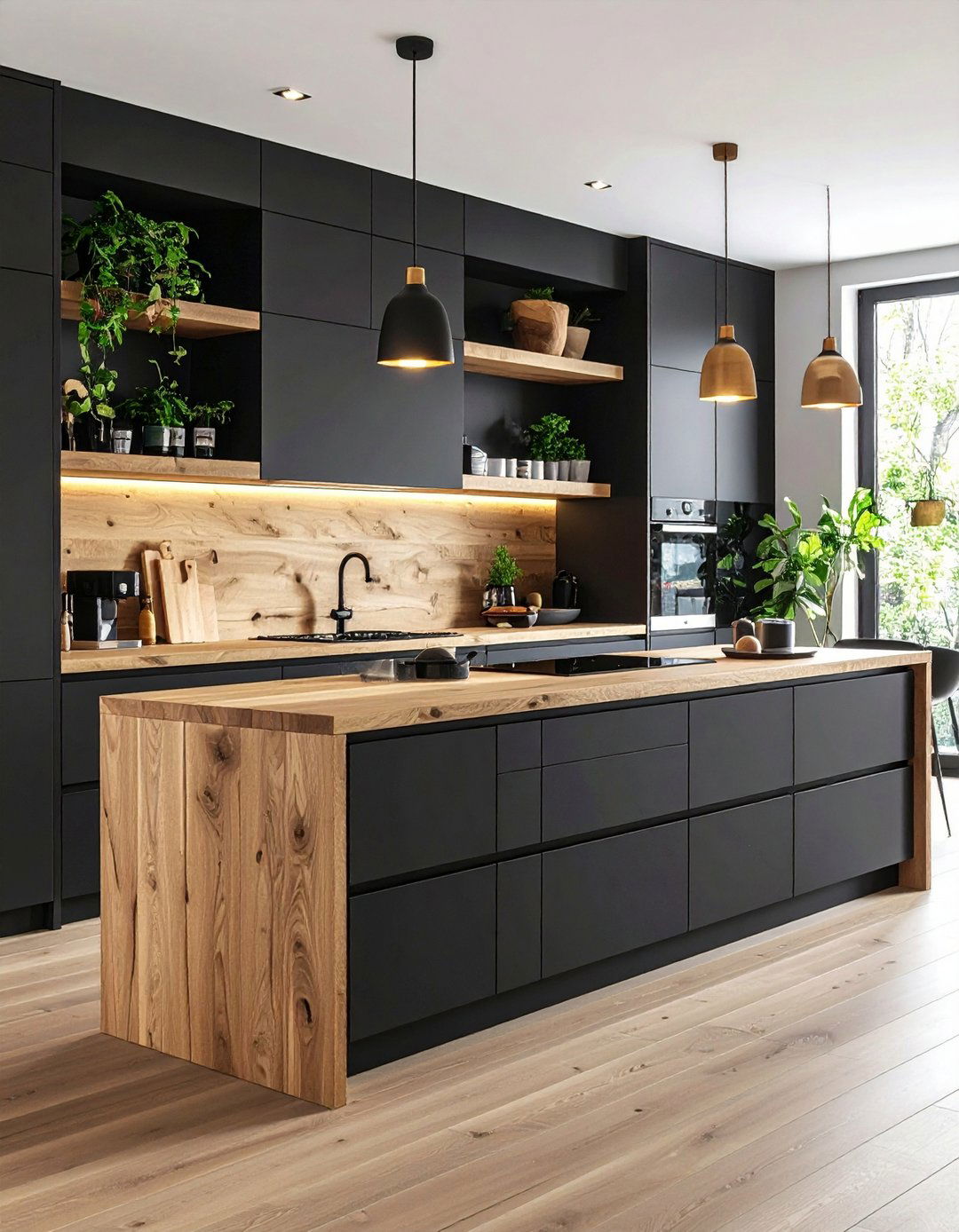
The quickest way to stop black kitchen cabinets from feeling cavernous is to weave in warm, medium-toned timber. Floating oak shelves, a butcher-block prep zone, or even veneer drawer fronts break up the darkness with organic pattern and glow. Designers love how grain contrasts against the smooth cabinet planes, giving the eye natural pauses. For cohesion, repeat the wood tone in smaller accessories—perhaps a bowl or bar-backing panel—so the addition looks integral rather than last-minute. If you already have hardwood floors, choose a distinct but complementary species so surfaces don’t blur together.
3. Strategic Lighting That Makes Black Shine
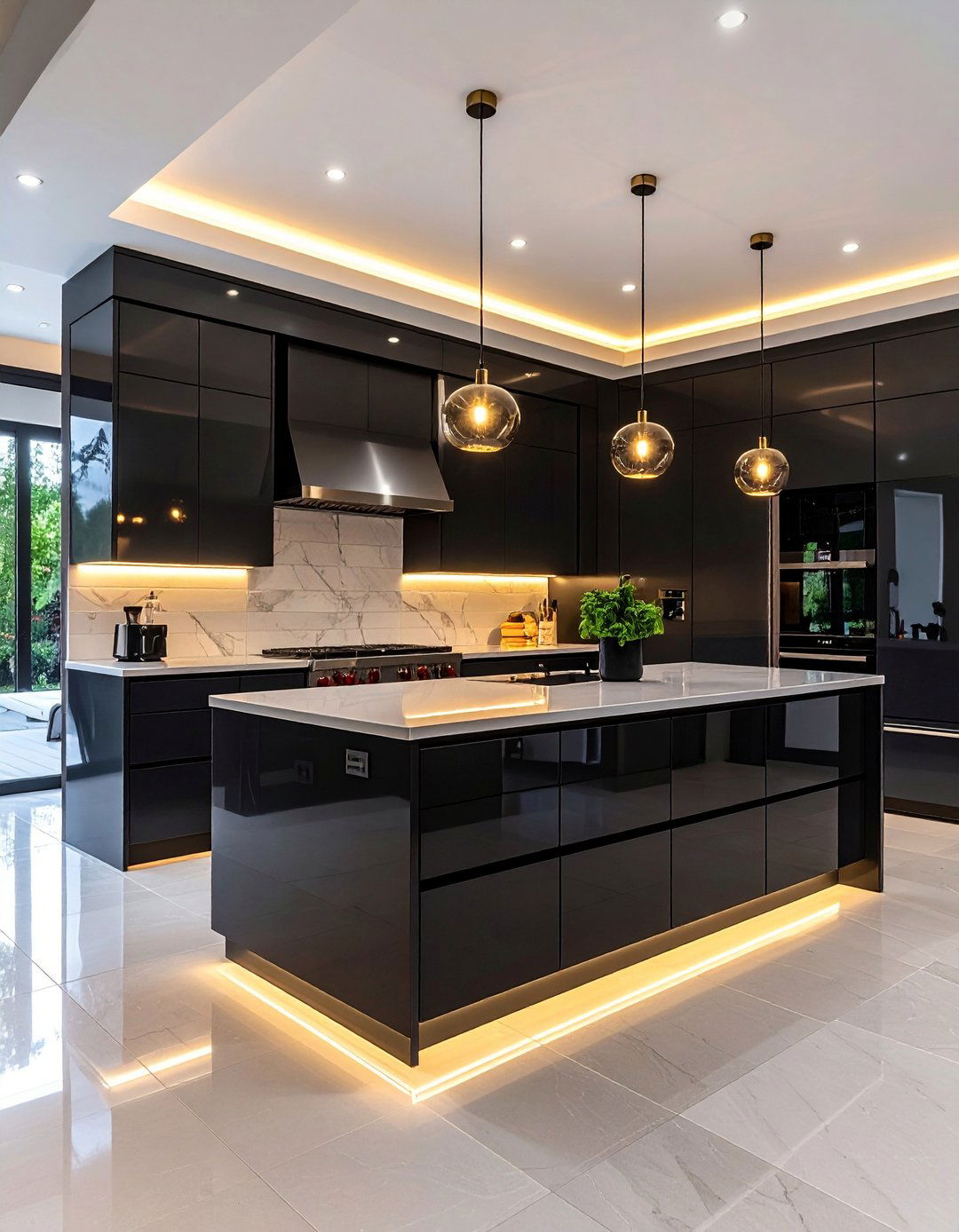
Lighting is the secret sauce that stops black kitchen cabinets from swallowing light. Layer illumination: ceiling spots for overall brightness, slim under-cabinet LEDs to wash worktops, and statement pendants that bounce soft pools onto the fronts. Warm white (2700–3000 K) bulbs bring out brown undertones in wood accents and add inviting ambience, while color-rendering indices above 90 ensure food still looks appetizing. If you’re retrofitting, magnetic LED strips on shelf undersides install in minutes without wiring headaches. A final trick: reflective backsplash tiles amplify each lumen, doubling the glow without a higher energy bill.
4. Blend Black Cabinets With Open Shelving
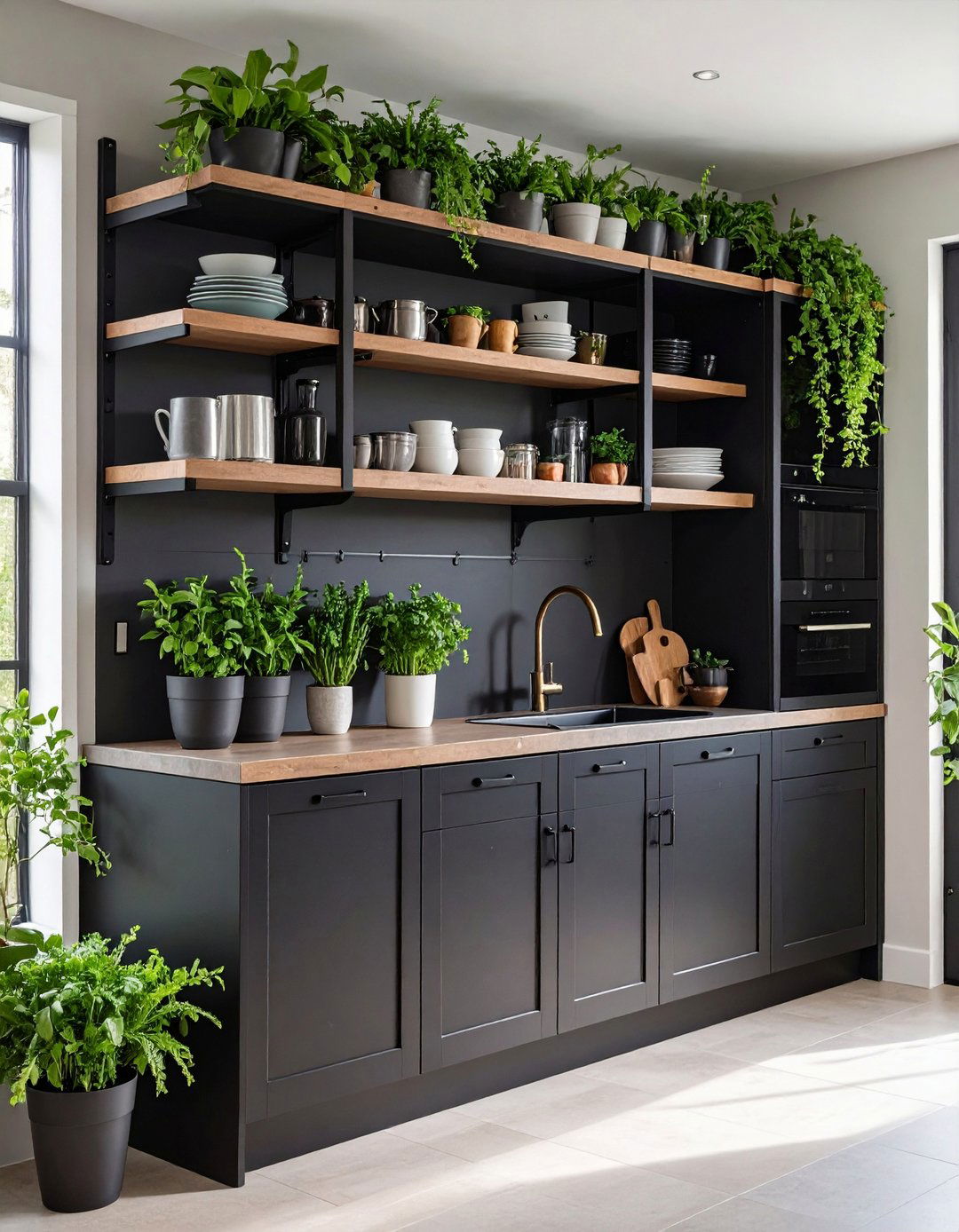
Open shelves above a run of full-height black kitchen cabinets keep the room from feeling boxed in. Leaving select wall spaces airy showcases favorite crockery and plants, introducing pops of color that break up the dark expanse. Choose sturdy metal brackets powder-coated to echo the cabinet paint for a seamless transition, or go for concealed supports if you prefer a floating look. Limit display items to a cohesive palette to avoid visual clutter. For renters, rail-mounted shelf systems screw into studs yet come down cleanly at move-out—an easy way to trial the aesthetic commitment-free.
5. Brass and Gold Hardware for Luxe Contrast
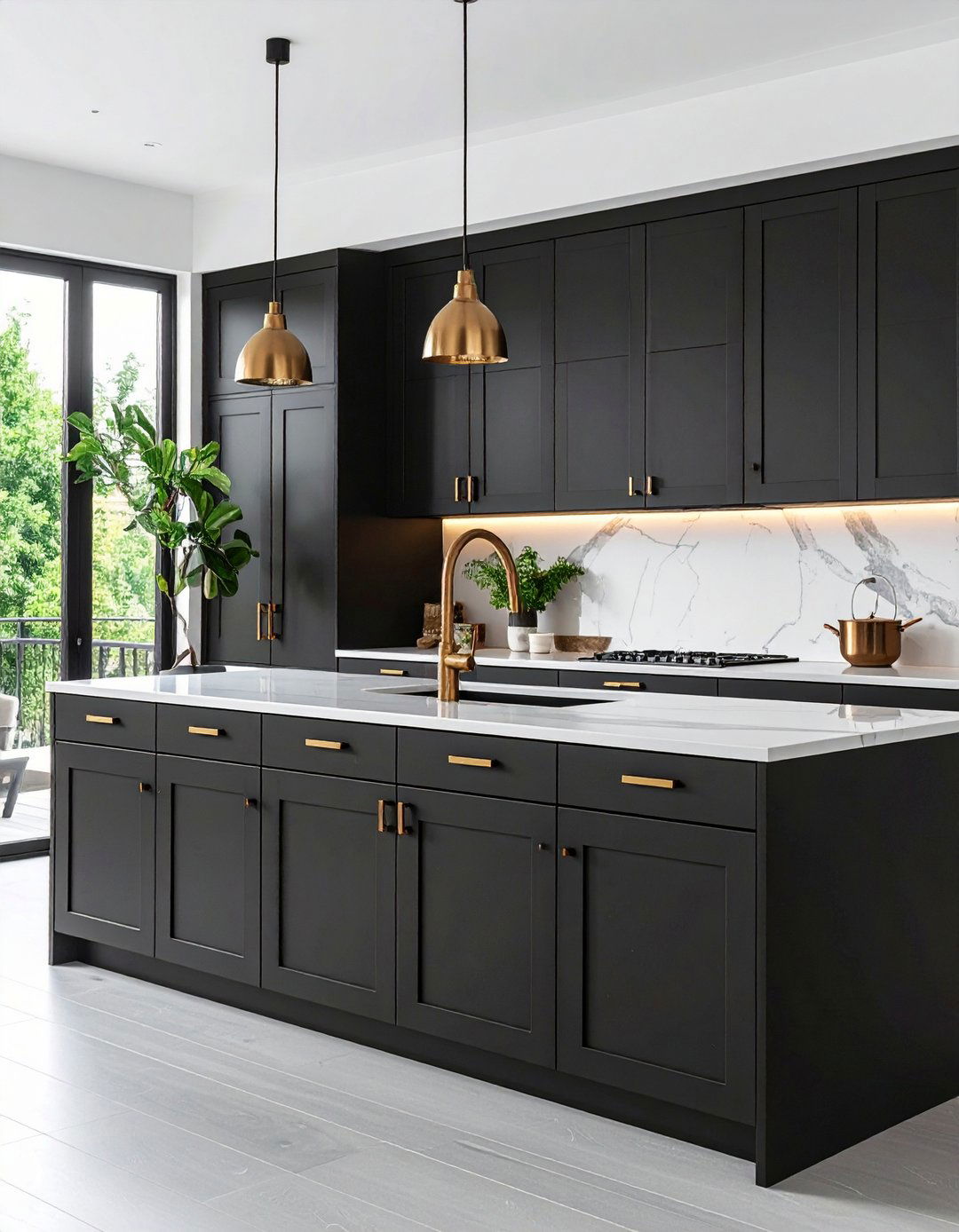
Few upgrades look as instantly luxurious as swapping standard pulls for warm metallics that gleam against a black cabinet door. Brushed brass, champagne bronze, or unlacquered copper each lend different vibes—from glam to aged patina—but all add dimensional sparkle. Consistency matters: echo the tone in faucet necks or a sconce frame so accents feel intentional, not random. If you’re nervous about fingerprints, choose a satin or antique finish that mutes smudges. For a budget route, spray-paint existing knobs with high-heat metallic paint and seal with clear coat—a weekend project that delivers boutique impact.
6. Crisp White Countertops for High Contrast
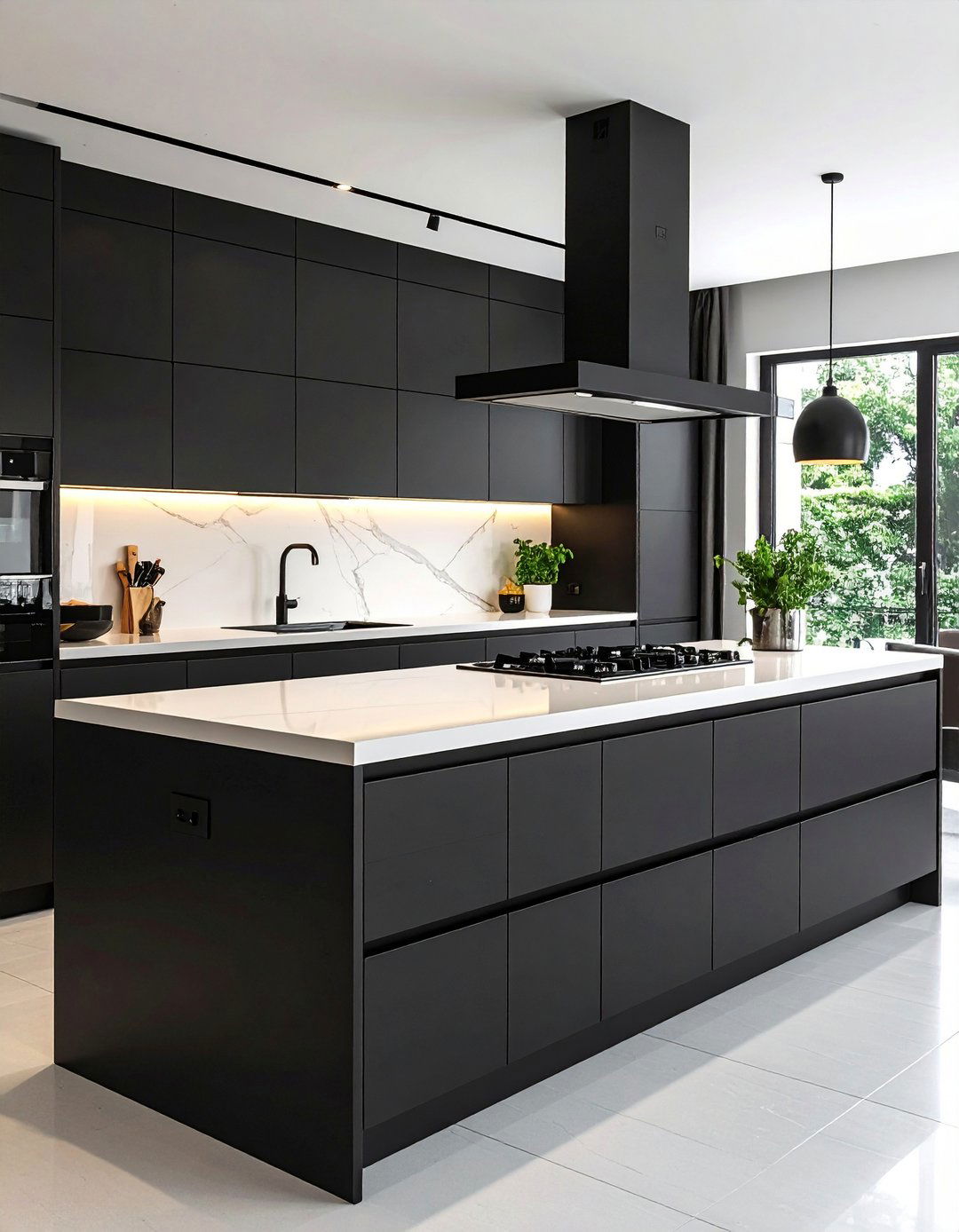
Classic black-and-white pairings remain timeless because they balance depth with brightness. Engineered quartz or solid-surface slabs in pure white or subtle veining create a dramatic, graphic line atop black kitchen cabinets. The reflective counter plane also bounces ambient light, visually enlarging the workspace. Keep grout lines paper-thin or opt for waterfall edges to accentuate the color break. If pure white feels stark, off-whites with faint gray marbling soften the effect while still preserving clarity. Add matte black electrical outlets along the backsplash so functional bits don’t interrupt the bold contrast.
7. Two-Tone Cabinetry for Dynamic Depth
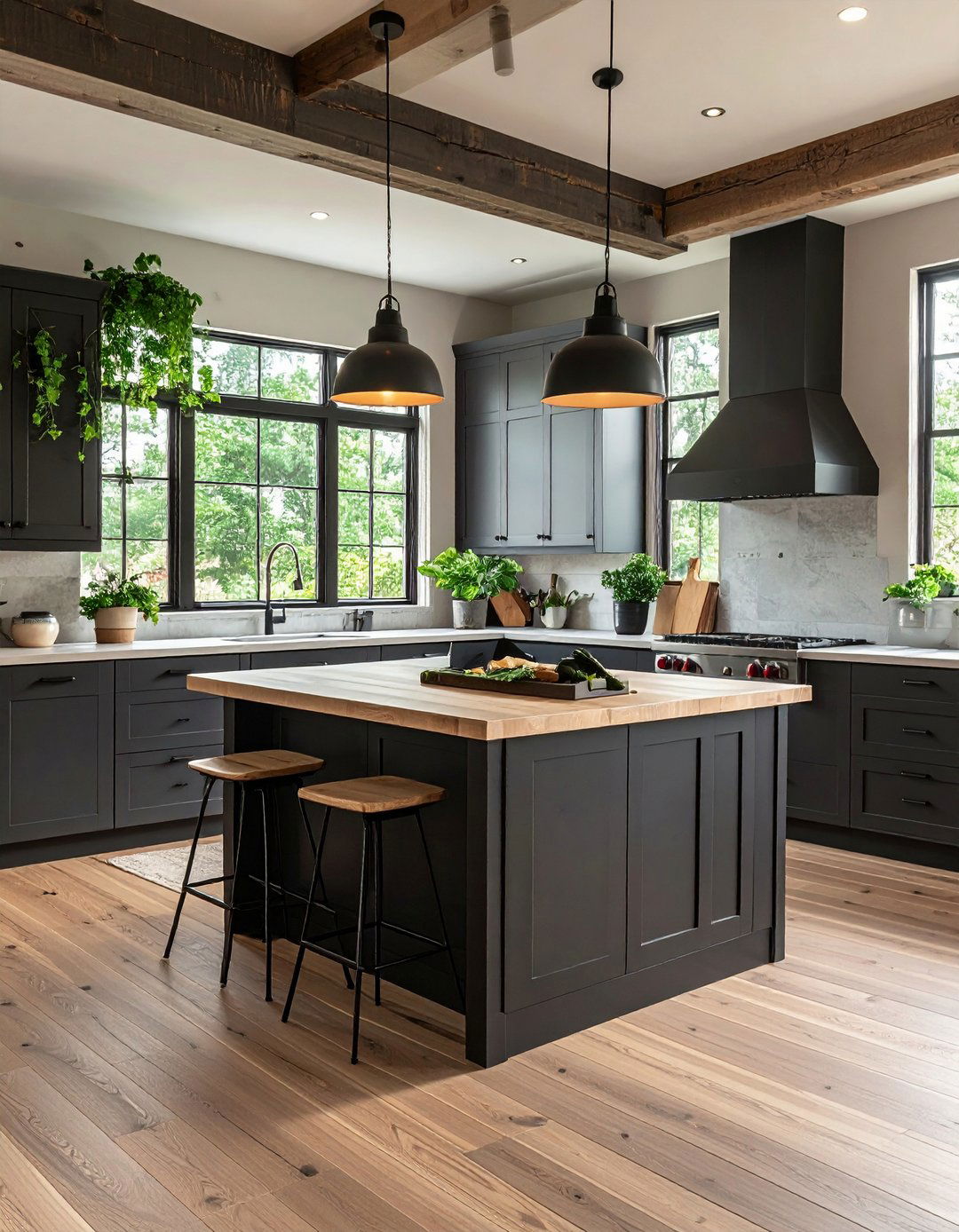
Staggering color—dark bases with lighter uppers—is a 2025 must-try trend that injects instant motion into kitchen walls. Let lower black kitchen cabinets anchor the room while pale gray, cream, or fluted wood wall units lift sightlines. The result? A grounded yet buoyant composition that suits both soaring lofts and modest apartments. Tie the palette together via a mixed-material island: black on the cook-side, bleached oak toward the breakfast stools. If you’re nervous, paint just one tall pantry door first; living with the change eases the leap to full two-tone glory.
8. Space-Amplifying Tricks for Small Kitchens
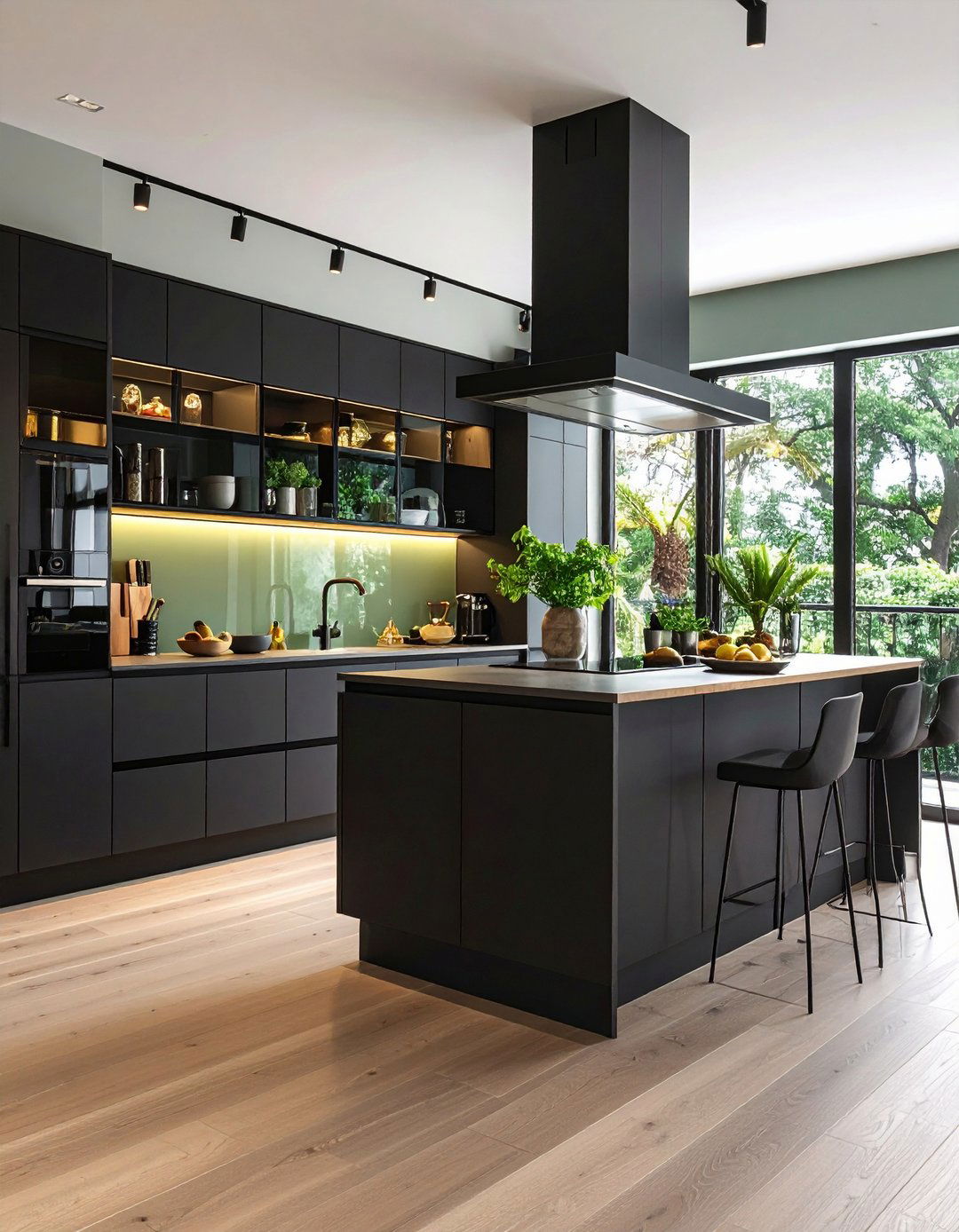
Worried that dark cabinetry shrinks square footage? Smart design counters the effect. Keep upper runs minimal, favoring open shelving or glass inserts. Choose slab-style doors without rails that read as one continuous plane, minimizing visual breaks. Flood counters with LED strip lights to dissolve corner shadows, and position a mirror—or reflective backsplash—opposite a window to bounce daylight deep into the room. Ground the cabinetry on legs or toe-kicks painted wall color to create a floating illusion. Suddenly, that galley kitchen feels airy instead of enclosed.
9. High-Gloss Finish for Modern Drama
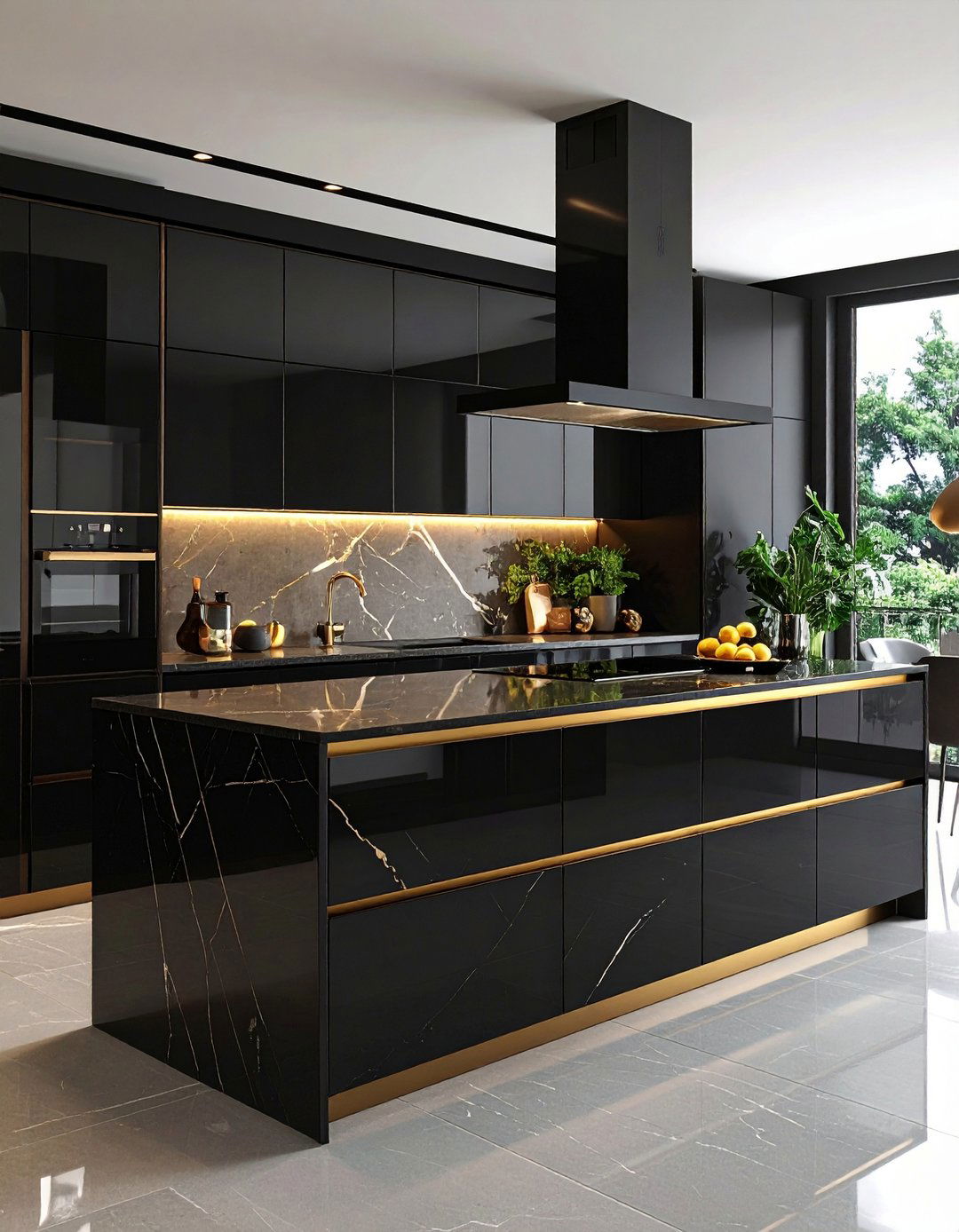
For homeowners chasing show-home glamour, a piano-gloss black lacquer reflects light like a mirror, adding depth akin to a nighttime city skyline. The sheen doubles room brightness by reflecting pendant and under-cabinet beams, countering the darker pigment. Because glossy doors spotlight imperfections, professional spray application delivers the flattest finish, but DIYers can achieve a near-lacquer look with high-build primer and meticulous sanding between coats. Pair ultra-shiny cabinets with matte stone counters for nuanced contrast rather than sensory overload. Soft-close hinges are non-negotiable—the quieter closure protects that pristine surface.
10. Rustic Farmhouse Meets Inky Sophistication
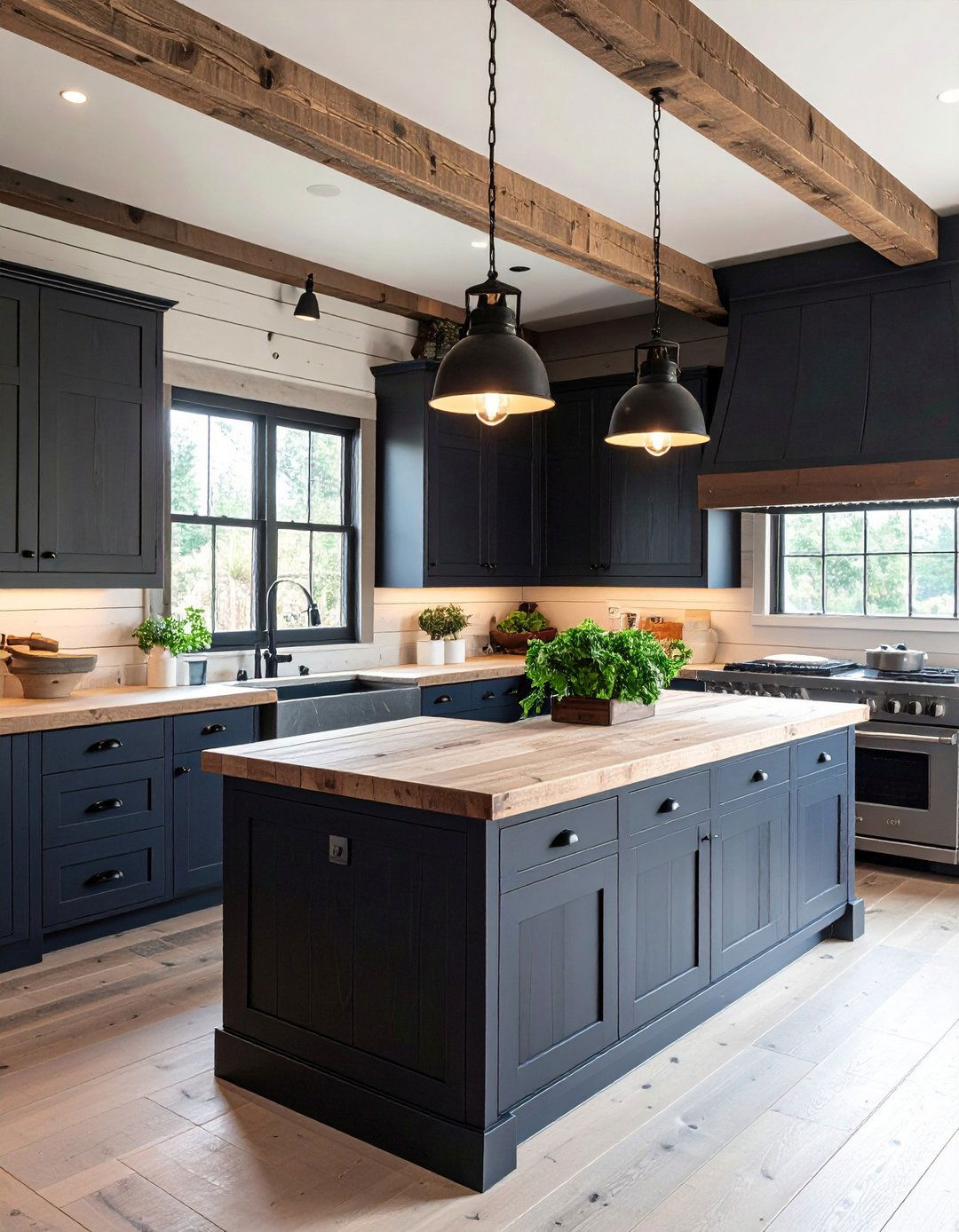
Black kitchen cabinets don’t have to spell stark modernity; they blend beautifully with shiplap walls, apron sinks, and vintage pendants for an updated farmhouse vibe. Opt for distressed or brushed finishes that reveal faint wood grain, lending timeworn charm. Complement with weathered bronze bin pulls, antique-style taps, and butcher-block counters that warm the palette. A patterned cement tile floor echoes traditional motifs while grounding the dark furniture. The key is balance: mix one polished material—like glossy subway tile—to prevent the space from tipping fully rustic.
11. Reclaimed Texture for Earthy Interest
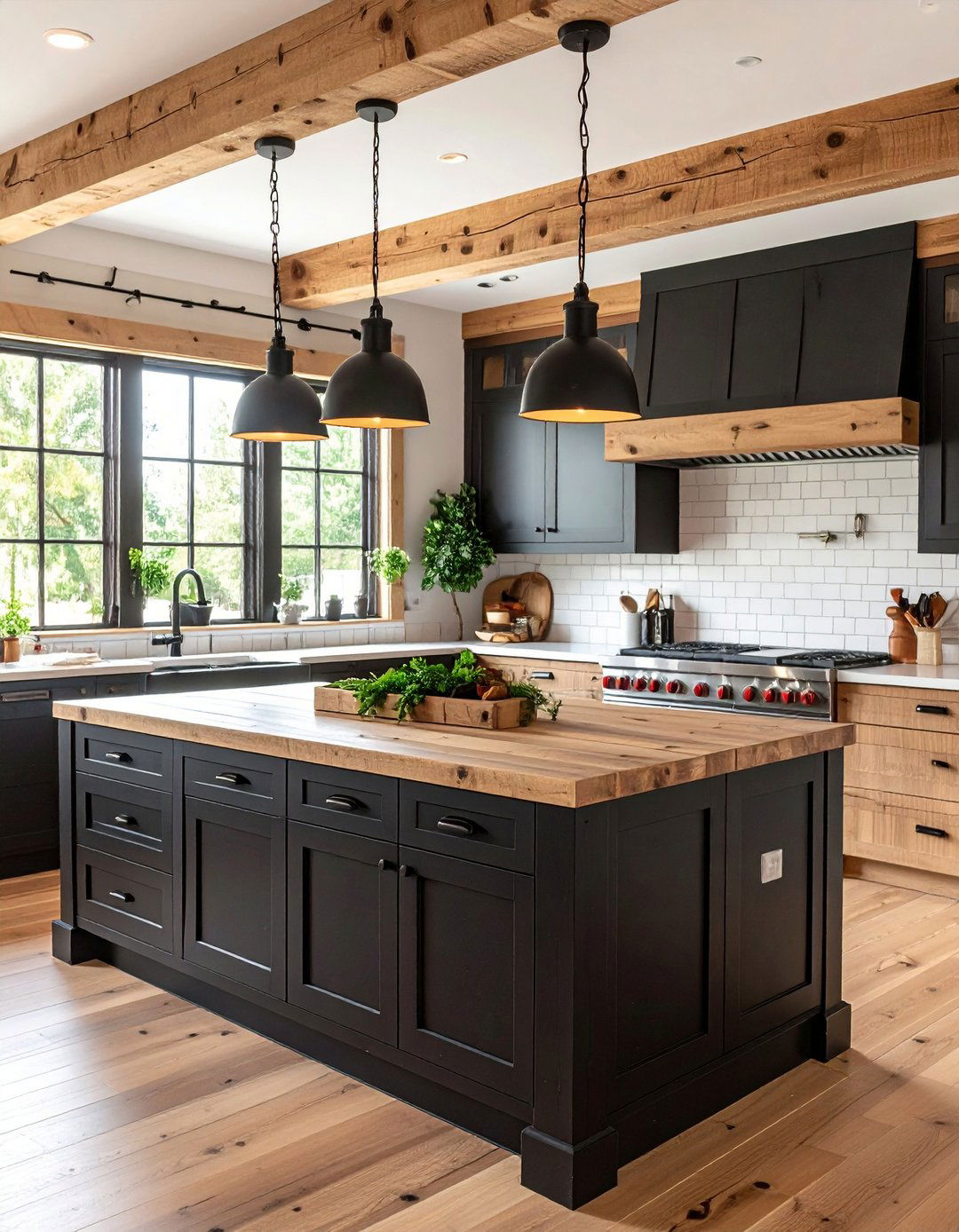
Introducing reclaimed beams, salvaged shelving, or rough-sawn island panels beside sleek black cabinets layers tactile intrigue and sustainability cred. Weathered pine or oak brings nuanced grain and knots that pop against the matte dark paint. Seal reclaimed wood with low-luster polyurethane to maintain patina without splinters. For cohesion, repeat the aged timber in a range hood trim or breakfast-nook bench. The juxtaposition feels curated rather than contrived, merging urban sophistication with countryside soul.
12. Handleless Minimalism for Seamless Lines
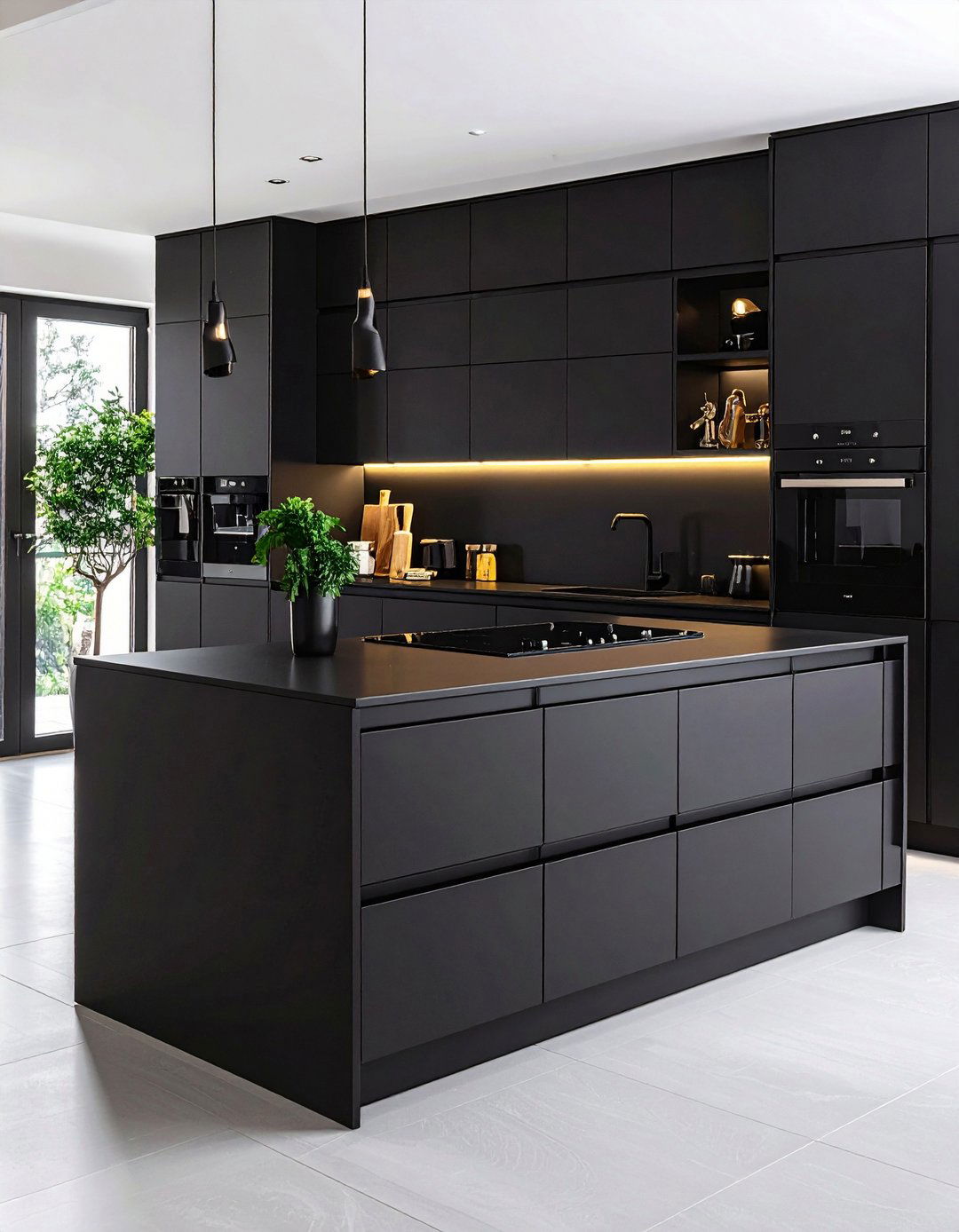
True handleless rails or push-to-open hardware strip visual noise away, letting black kitchen cabinet planes read as uninterrupted architecture. Integrated aluminum channels—often painted the same color—offer finger grip, while mechanical push latches work on wall units. Without protruding knobs, galley layouts gain precious inches of walk space. To keep fingerprints under control, choose soft-touch laminates or nano-coated acrylics designed to repel oils. Accent the sleekness with a sculptural ceiling hood to echo the streamlined aesthetic.
13. Painting Existing Cabinets Black: Durability Keys
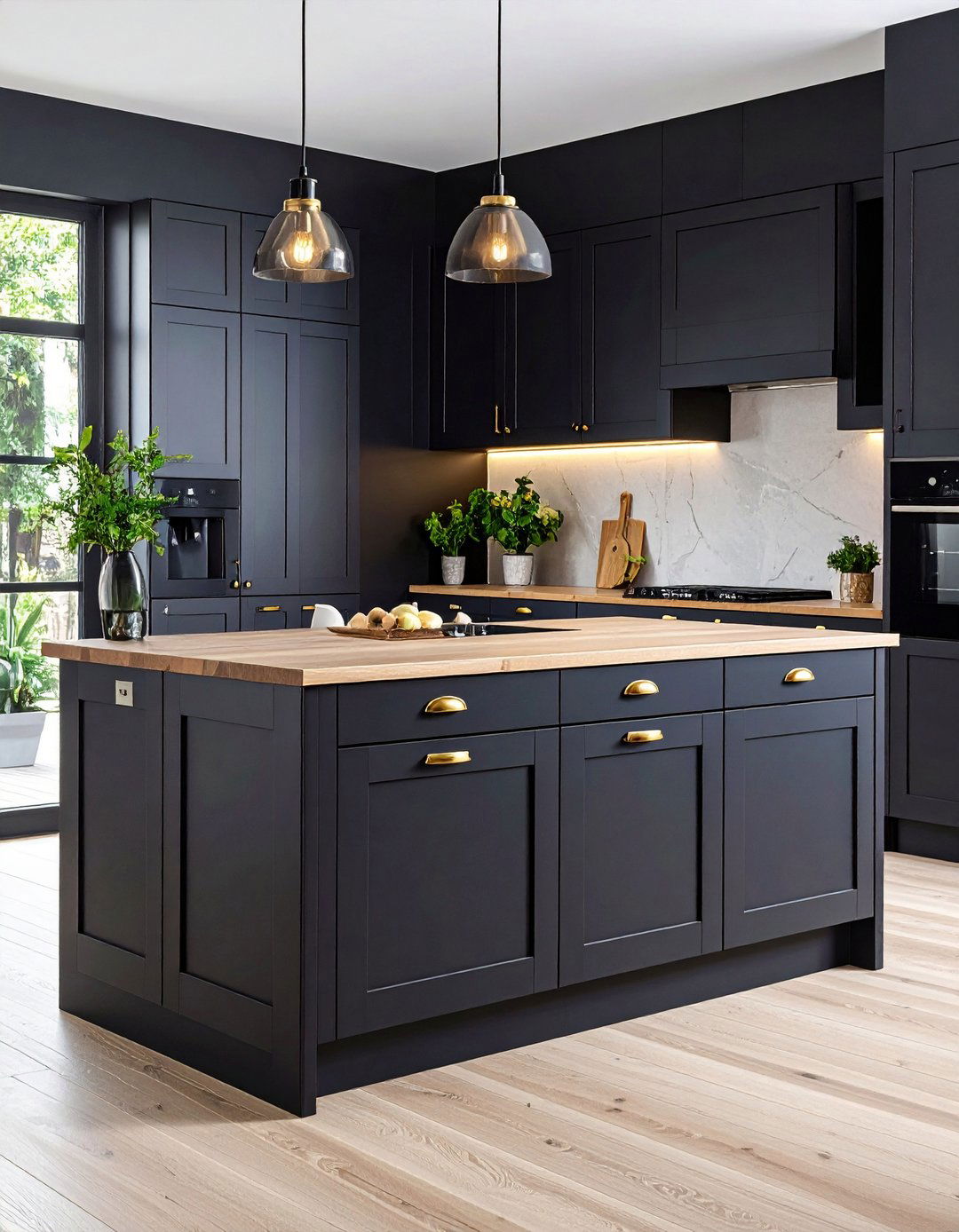
Transforming dated oak units into striking black kitchen cabinets is cost-effective when you prep correctly. Lightly sand to de-gloss, use bonding primer labeled for wood, and choose furniture-grade enamel or cabinet-specific polyurethane paint for toughness. Spray application—whether HVLP gun or aerosol—delivers smoother results than brush strokes, but high-density foam rollers can suffice for tight budgets. Cure times matter: resist rehanging doors until paint reaches full hardness, usually seven days. Add soft-close hinges to reduce chip-risk over time and finish with a protective clear coat if kids or pets are rough on surfaces.
14. Statement Backsplash as Focal Art
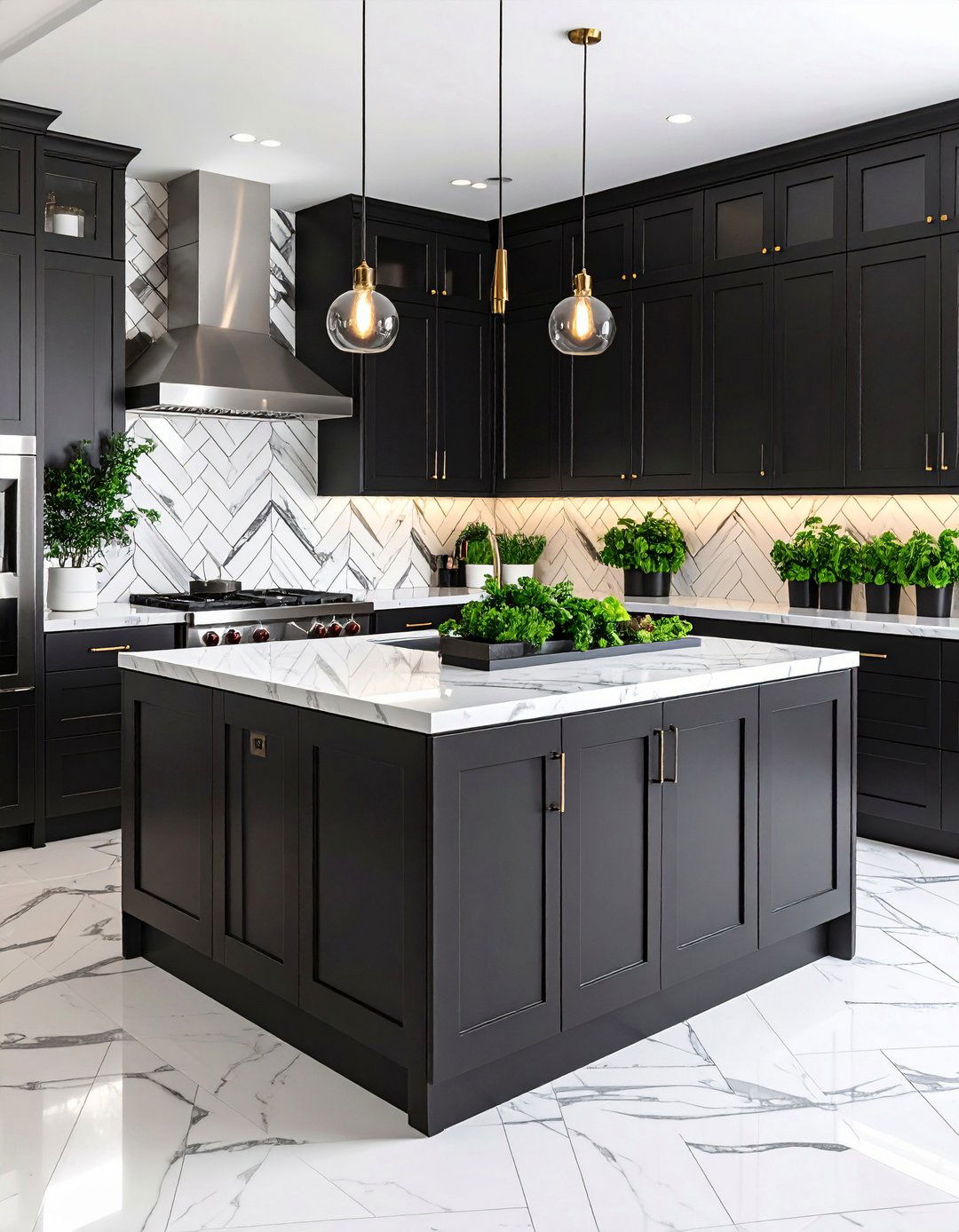
When cabinetry goes dark, backsplash tiles are free to steal the show. Designers suggest marble chevrons, zellige squares, or graphic encaustic motifs behind the range to add movement. Keep surrounding walls quieter so the pattern shines, and run the tile to the ceiling for loft-like height. Consider grout color carefully: white lines deliver crisp grid drama, while charcoal seams let tile shapes sing without interruption. Install a stainless or powder-coated ledge at eye level to display herbs—function plus decorative punch.
15. Light Flooring to Balance the Palette
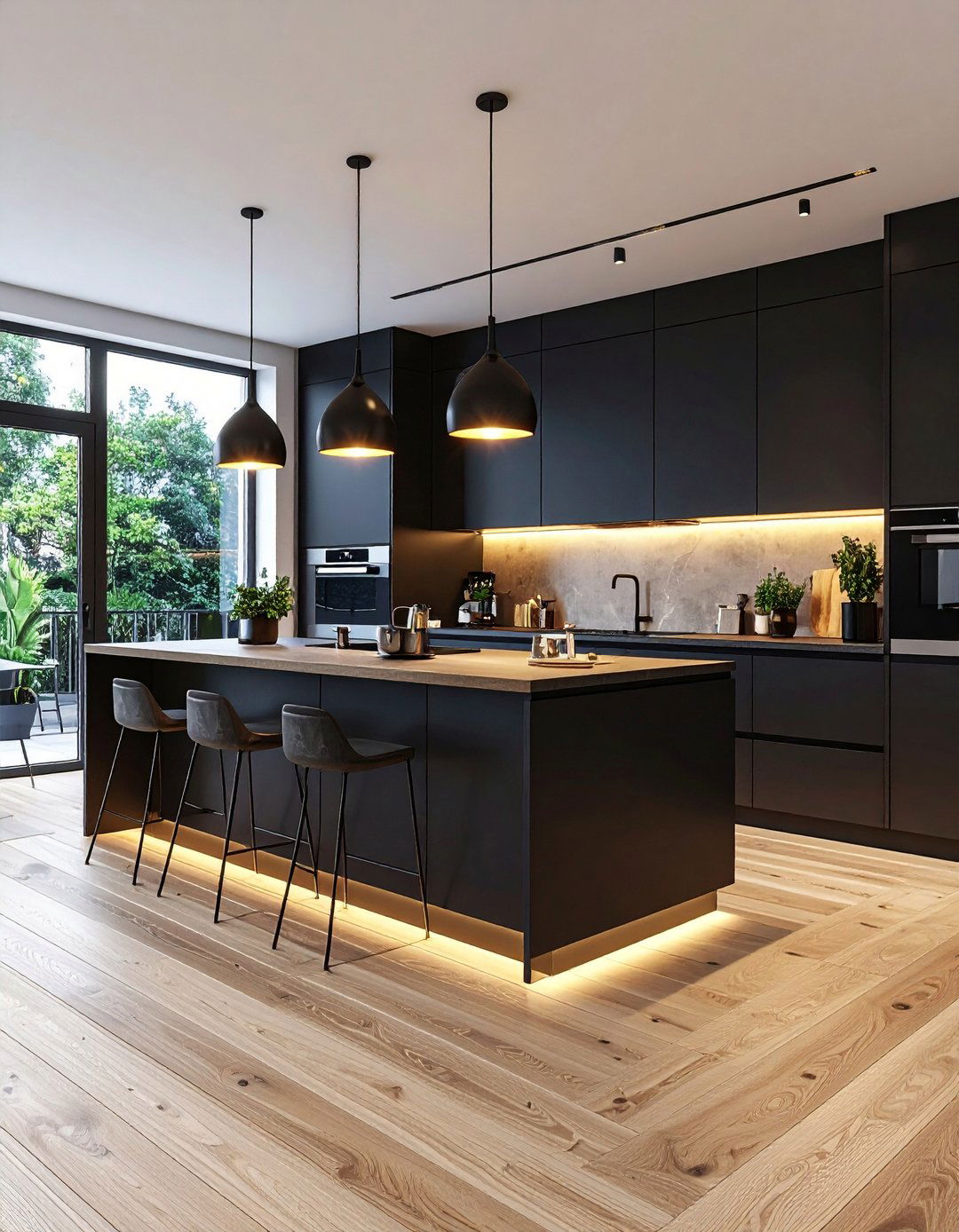
Swapping dark floors for pale oak, maple, or honed concrete brightens black kitchen cabinets from the ground up. Lighter planks reflect under-cabinet LEDs, visually expanding floor area. Wider boards (7–9 inches) minimize seams, creating an uninterrupted canvas that calms the strong cabinet color. If real wood is out of reach, luxury vinyl planks in bleached tones mimic grain convincingly and resist spills. Maintain color harmony by matching floor undertones to countertop veining for a pulled-together look.
16. Glass-Front Inserts Showcase Personality
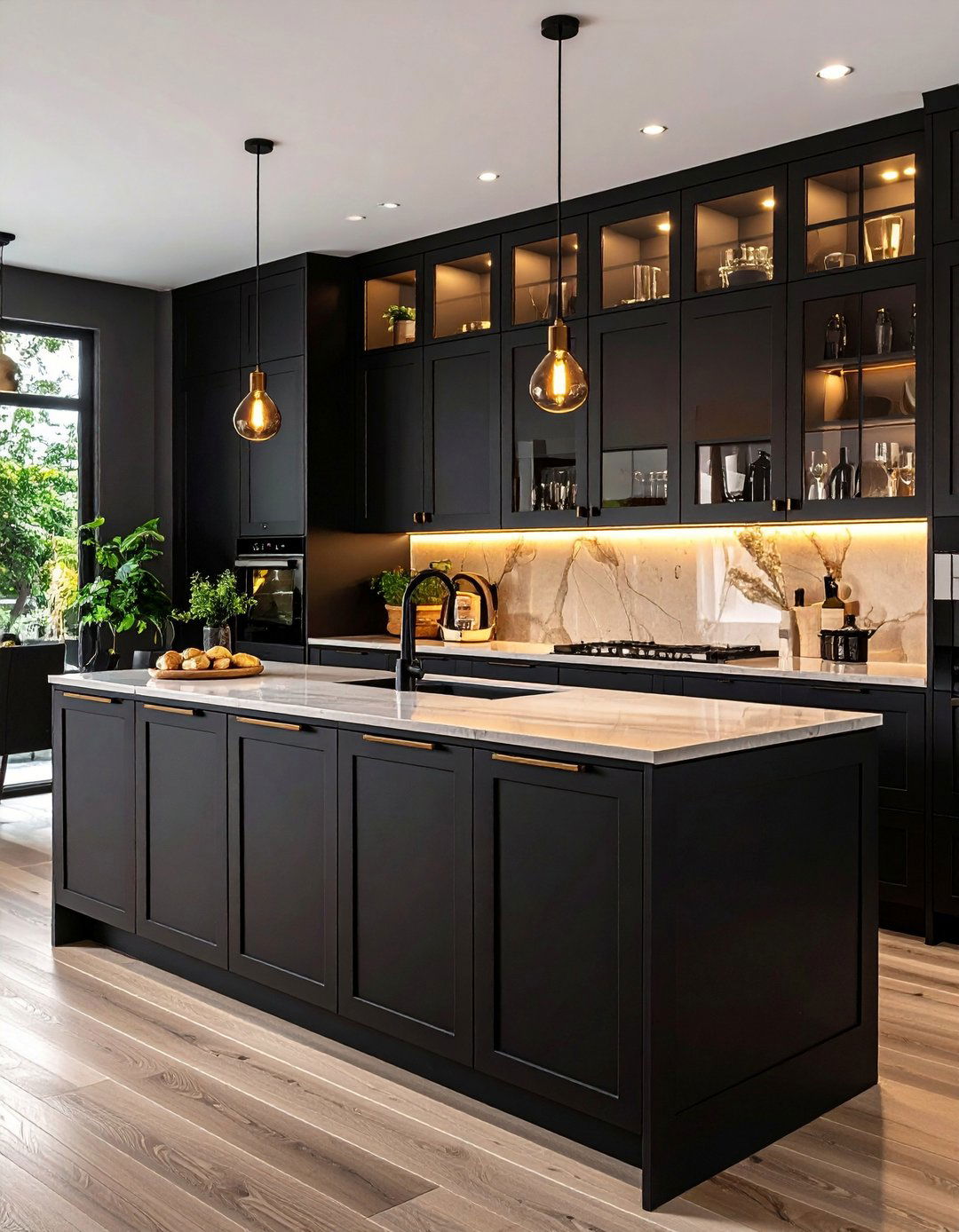
Swapping a few solid doors for clear or reeded glass introduces relief and display space without abandoning the black kitchen cabinet theme. Interior puck lights illuminate favorite ceramics, doubling as mood lighting after dinner. Choose bronze-tinted glass for subtle reflection if transparency feels exposing, or frosted panes to obscure everyday clutter. Frame the insert with slim stiles to maintain the cabinet’s sleek profile, and interior-paint the box a lighter shade so objects pop against the dark exterior.
17. Black Islands as Sculptural Centerpieces
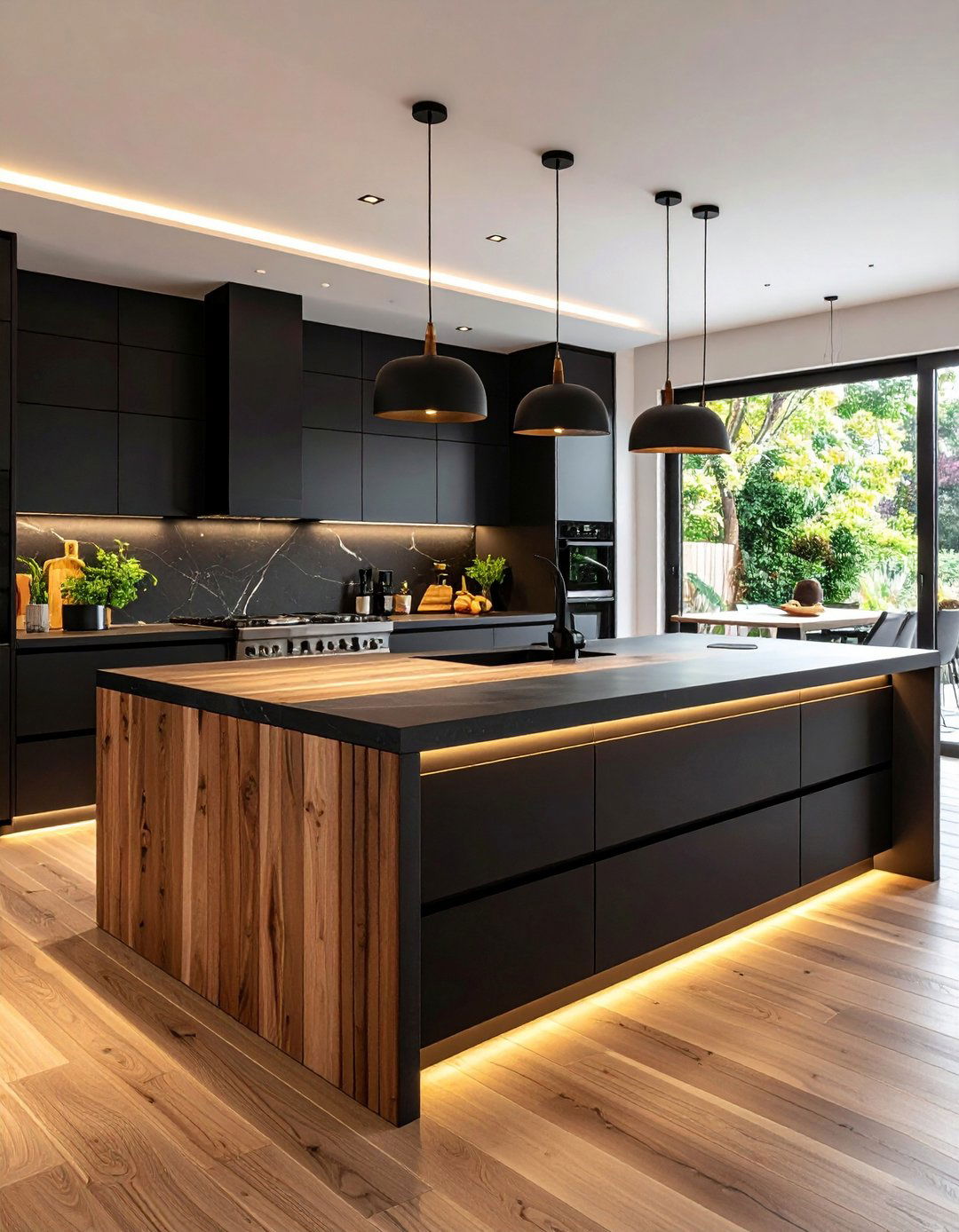
A monolithic black island commands attention, anchoring an open-plan space and acting as social hub. Waterfall countertops elongate the mass, while bar seating on the utensil-free side invites casual dining. To prevent visual heaviness, integrate a slatted wood detail on the stool face or recessed toe-kick lighting that floats the block above the floor. In compact layouts, a black rolling island delivers the statement while retaining flexibility—park it against the wall when you need dance-floor space.
18. Marble Moments for Timeless Luxury
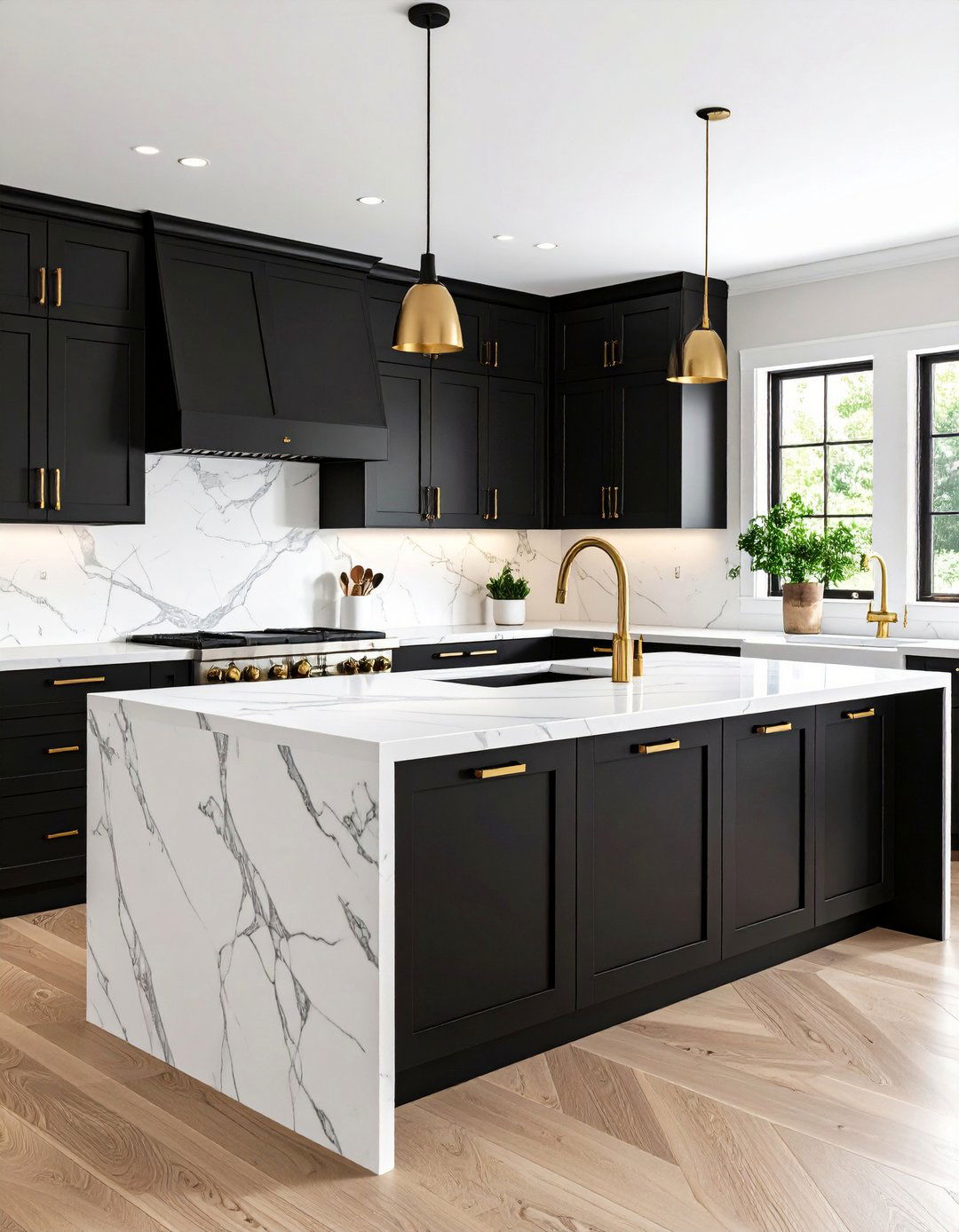
Pairing black kitchen cabinets with white, gray, or even green-veined marble countertops oozes sophistication reminiscent of boutique hotels. Honed finishes mute glare, emphasizing stone movement, while polished slabs reflect light for heightened drama. For maintenance-averse cooks, large-format porcelain looks replicate marble veining with zero sealing required. Extend the stone onto backsplash slabs for an unbroken sweep that lets the cabinets’ dark hue frame the natural artistry.
19. Smart Storage Hidden Behind Dark Doors
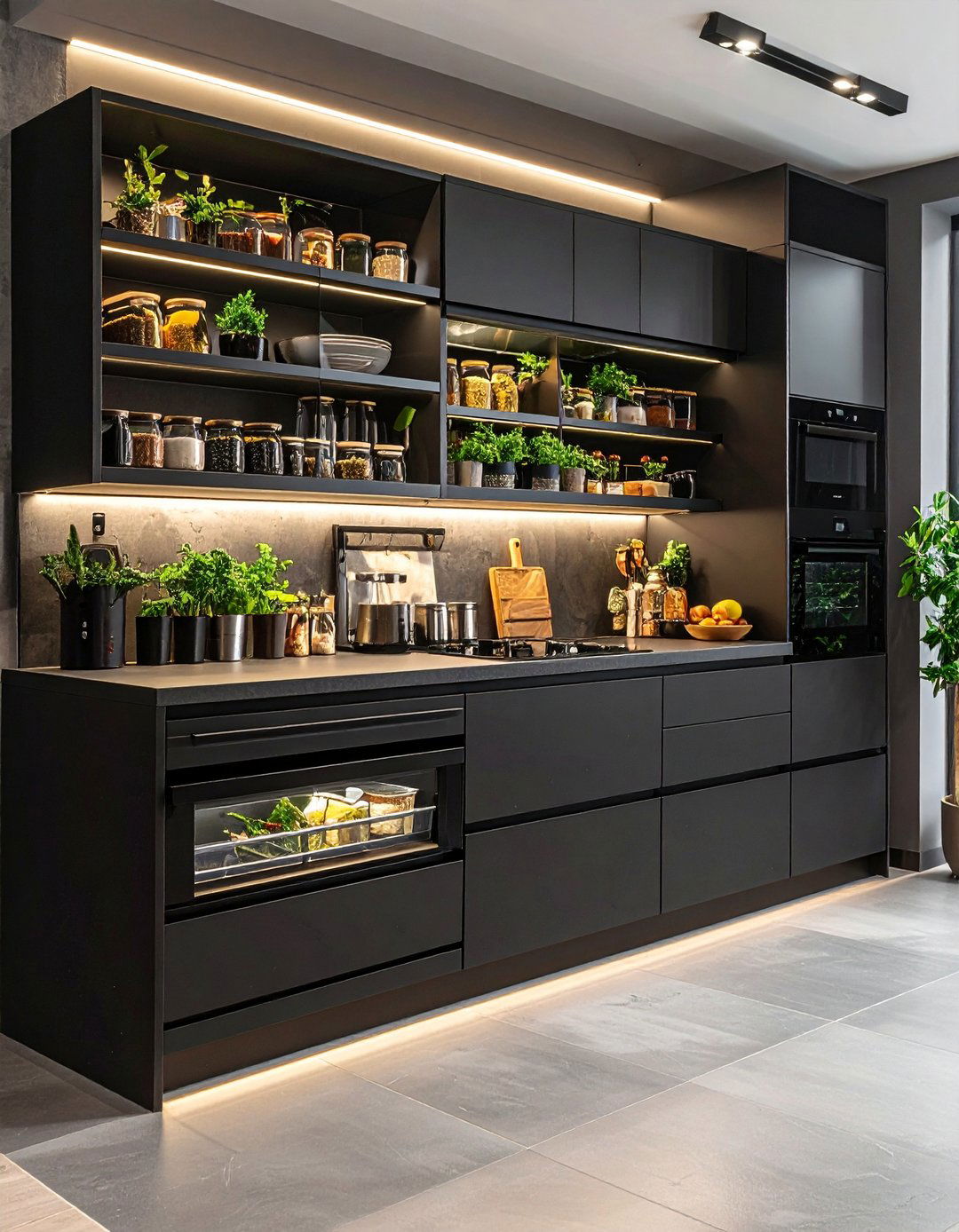
Dark fronts shouldn’t equal dark insides. Install pull-out pantries, tiered spice trays, and clear bins so contents stay visible. Affordable turntables and stacking risers keep everything accessible, as recent organizing guides highlight. For deep base cabinets, full-extension drawers eliminate hunting in the shadows. Add motion-sensor LED strips inside drawers—battery versions stick on without wiring. A clutter-free interior ensures the sleek exterior remains the star.
20. Eco-Friendly Finishes for Conscience and Air Quality
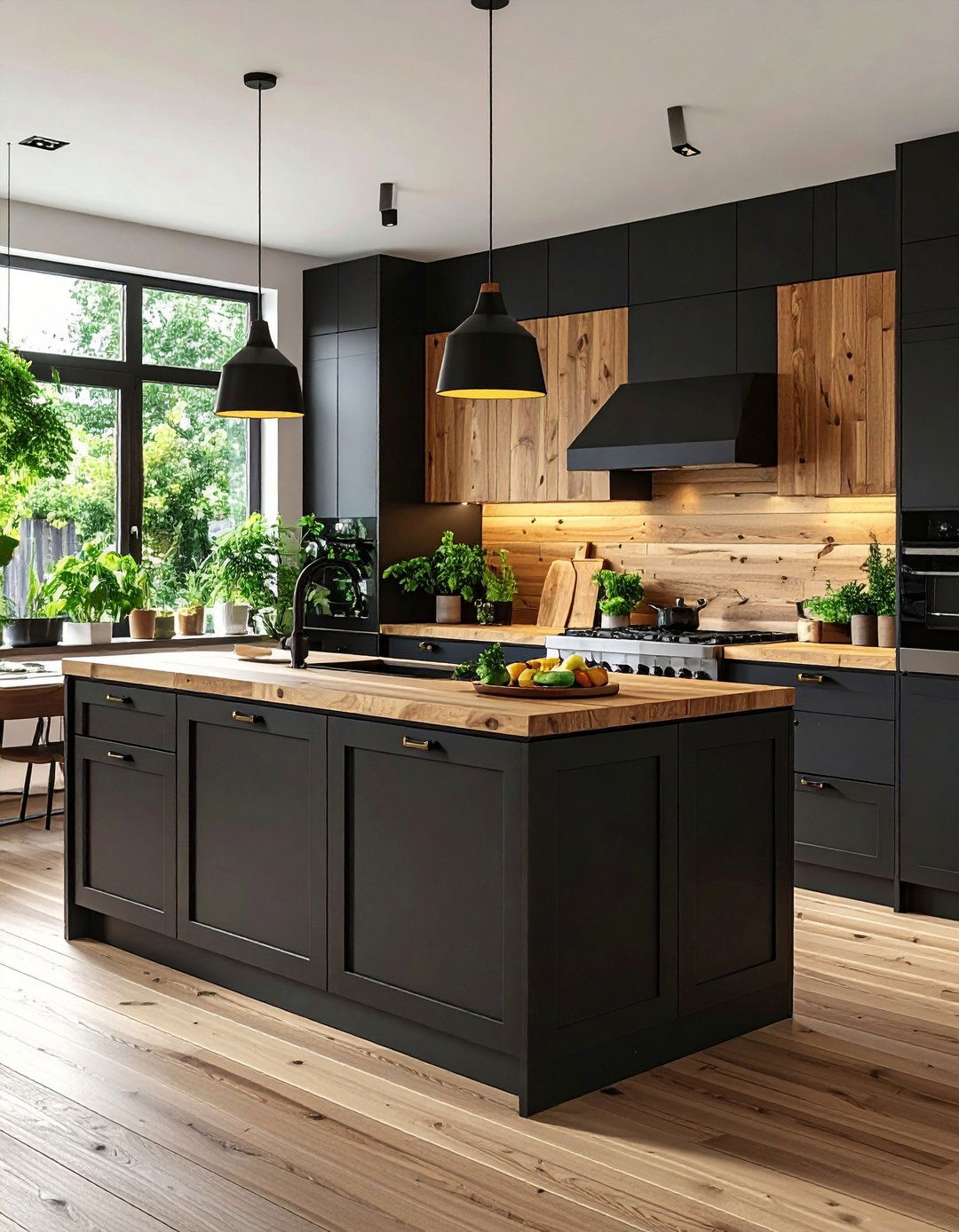
Low-VOC or zero-VOC paints now come in saturated black tones, letting you refresh cabinets without inhaling harsh solvents. These formulations reduce indoor toxins and off-gassing time, meaning you can cook dinner the same night the last coat dries. Combine with sustainably sourced FSC-certified cabinet boxes or bamboo plywood for an earth-minded makeover. Top the paint with a water-based clear coat for durability that still meets green standards. Even the boldest aesthetic can be gentle on the planet.
Conclusion:
From velvety matte finishes to handleless minimalism and statement marble, black kitchen cabinets prove endlessly adaptable—able to swing rustic, glam, or ultra-modern while offering practical benefits like concealment of daily wear and design flexibility. Layering textures, strategic lighting, and balanced contrast ensures the dark hue elevates rather than overwhelms, all while sustainable paints and smart storage keep the makeover both health- and life-friendly. Use these twenty ideas as building blocks to craft a kitchen where bold character meets everyday comfort.


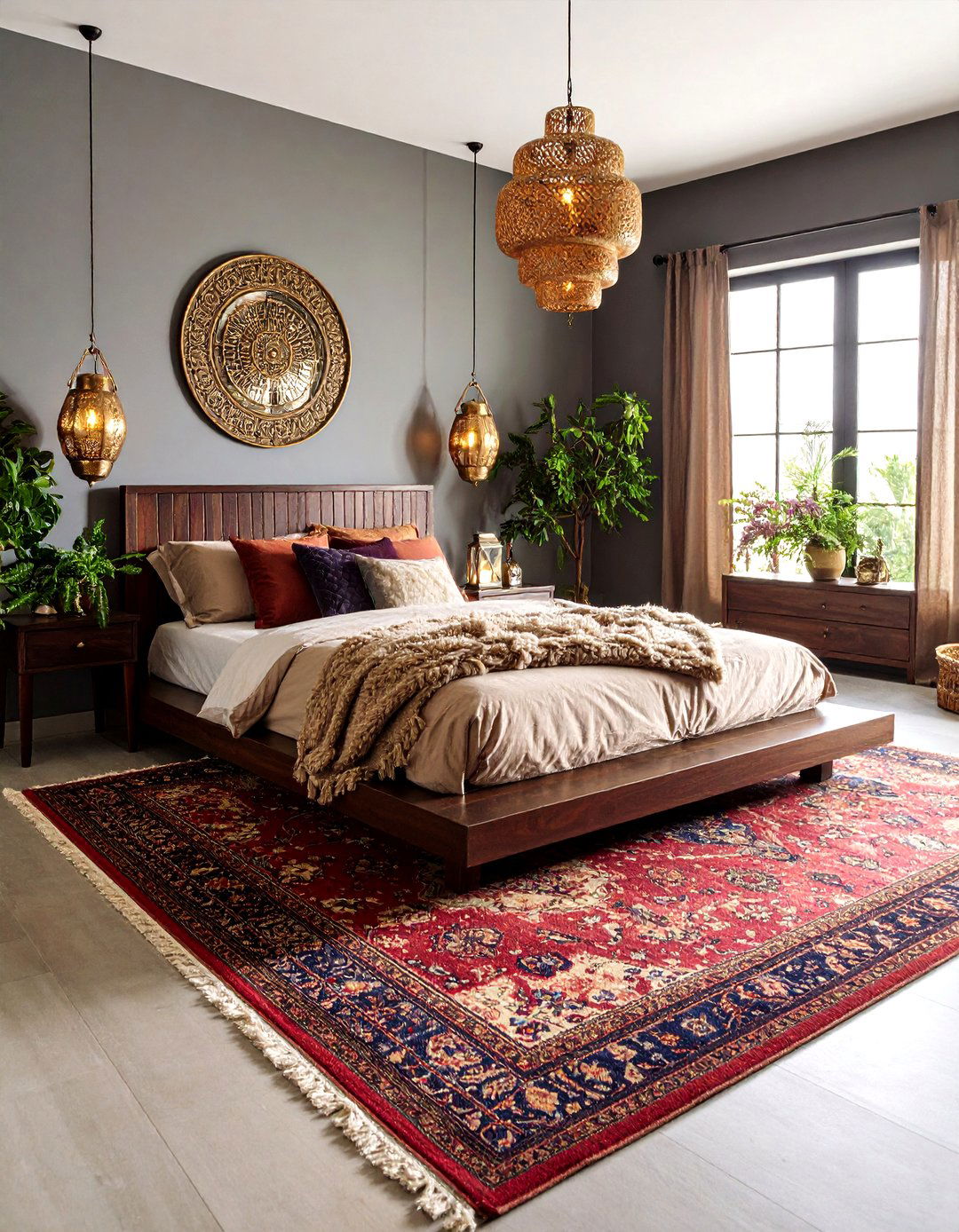
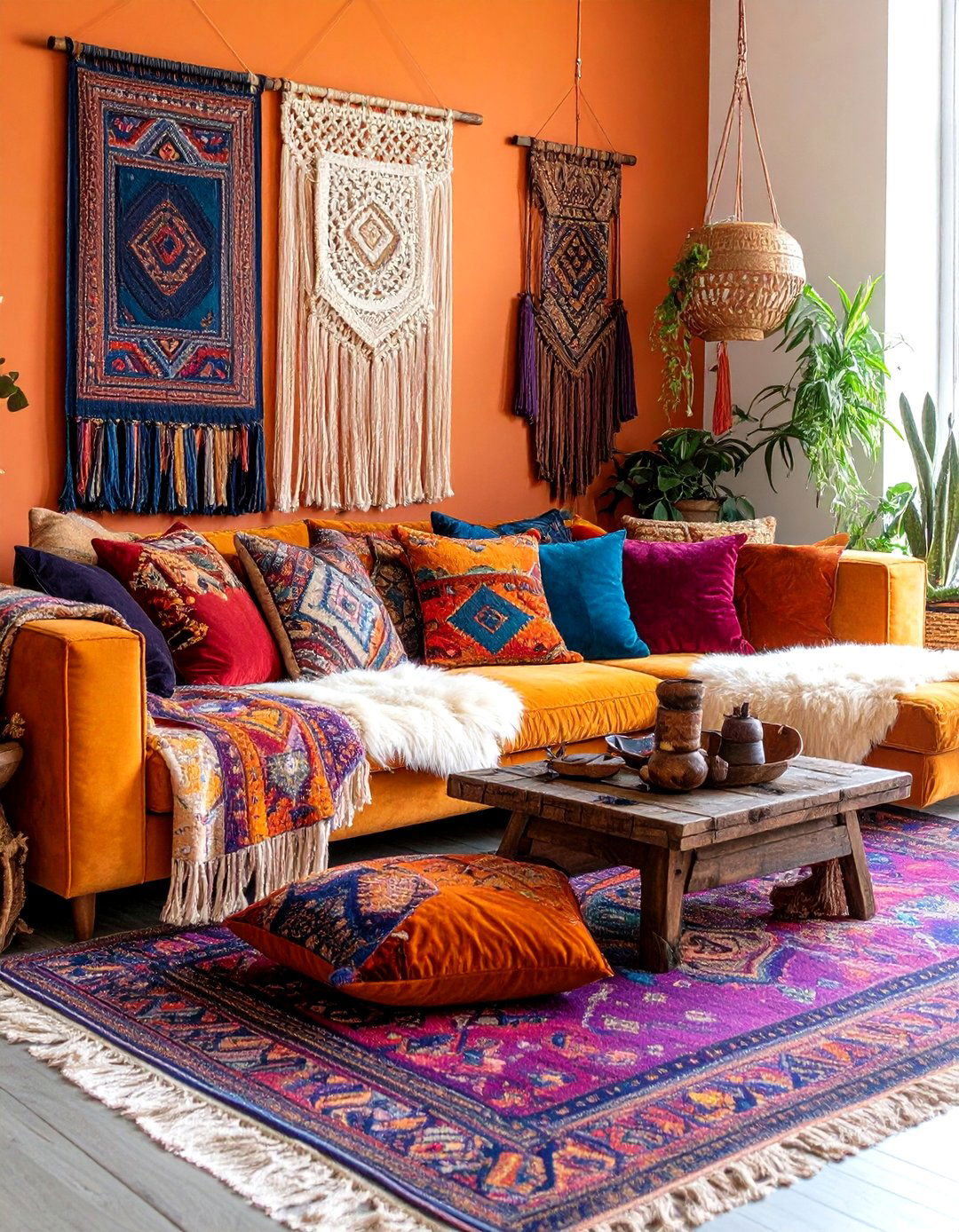

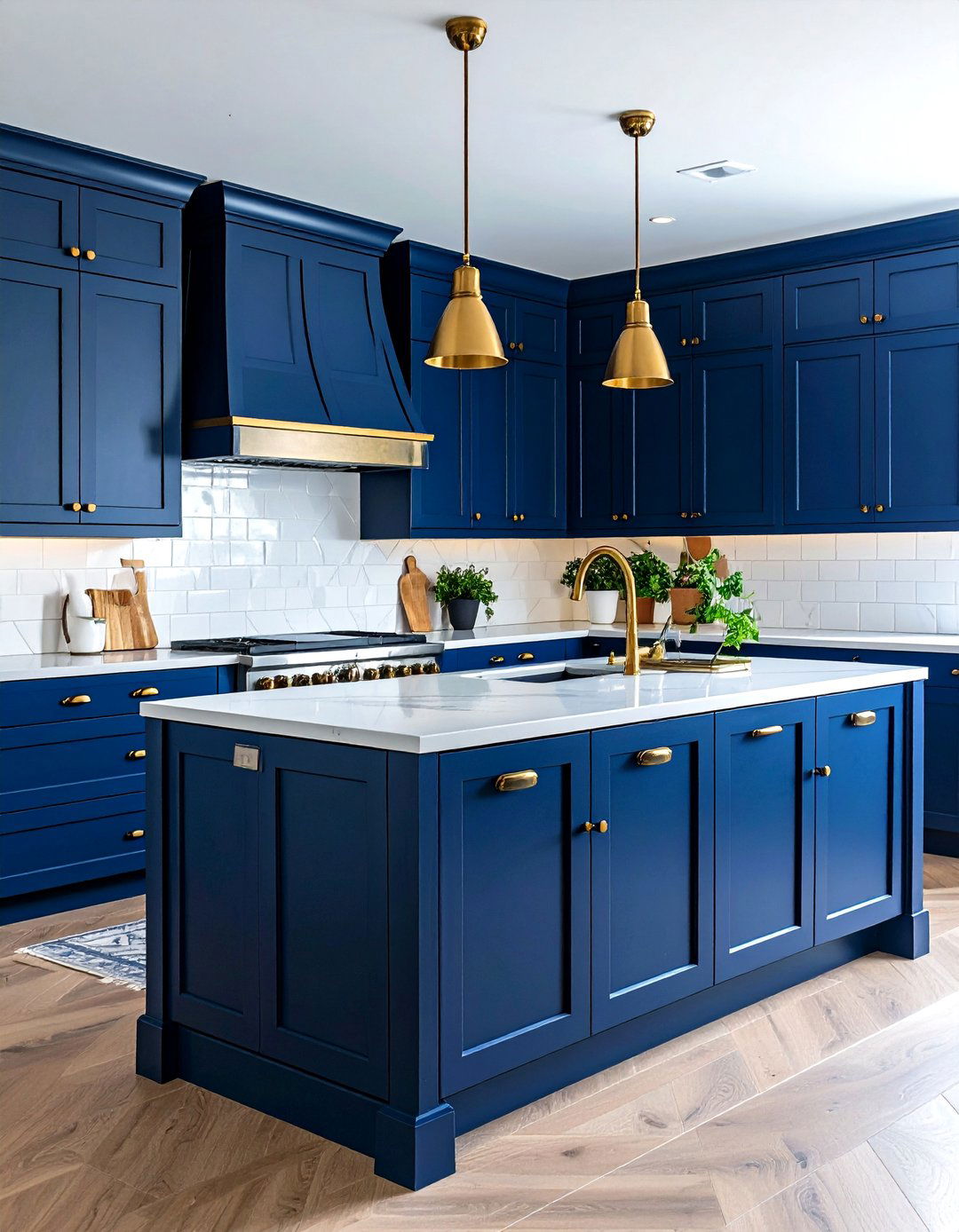
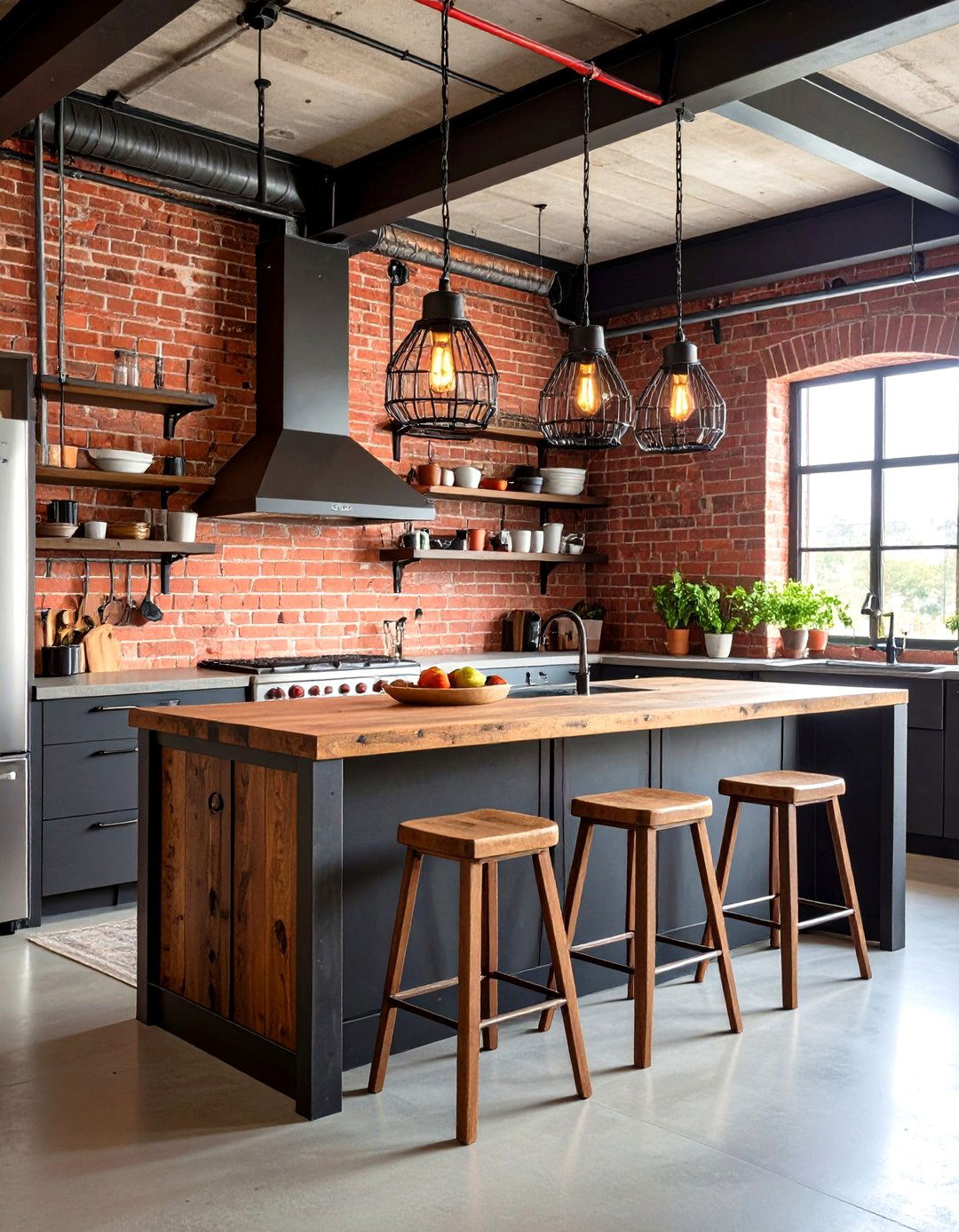
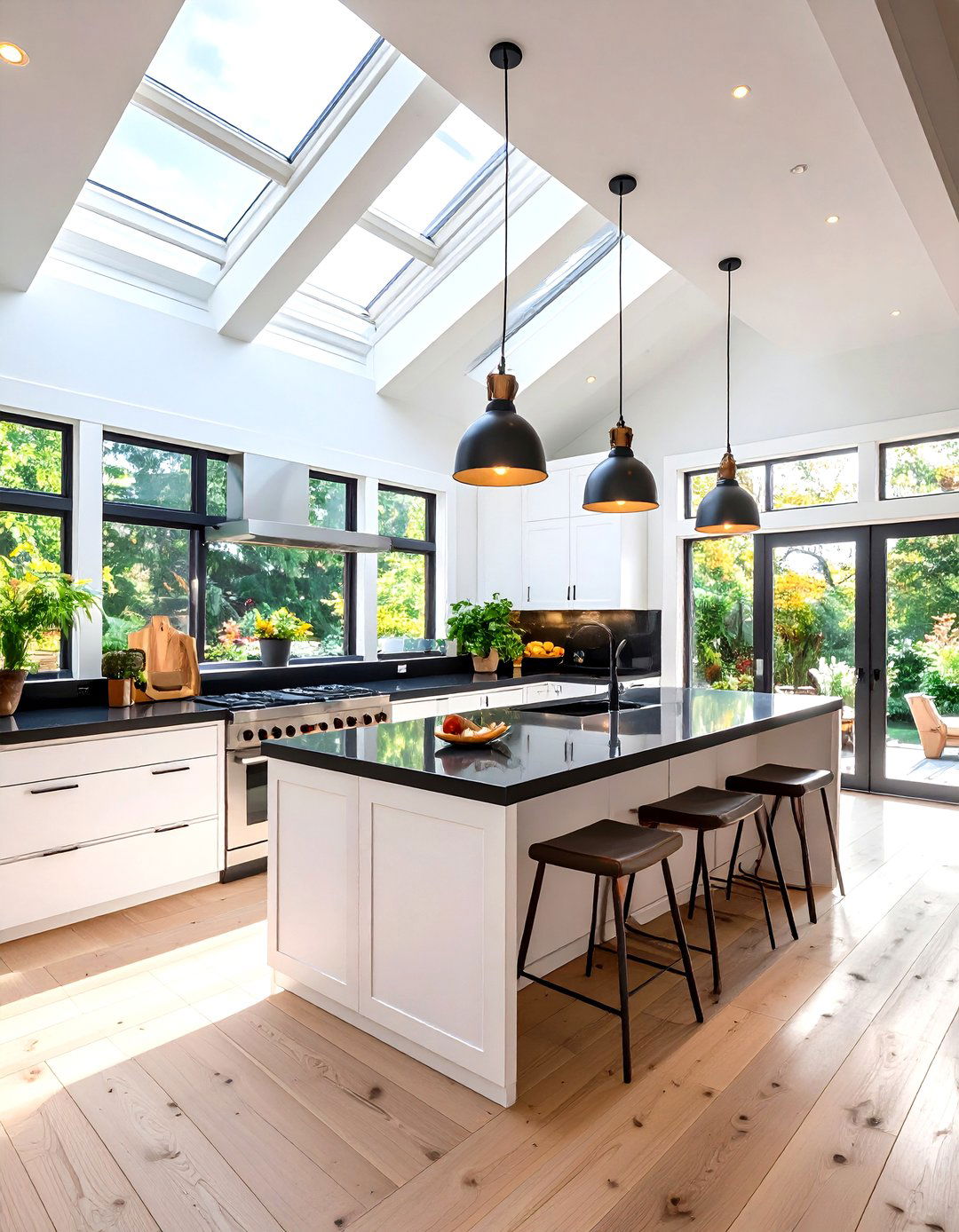
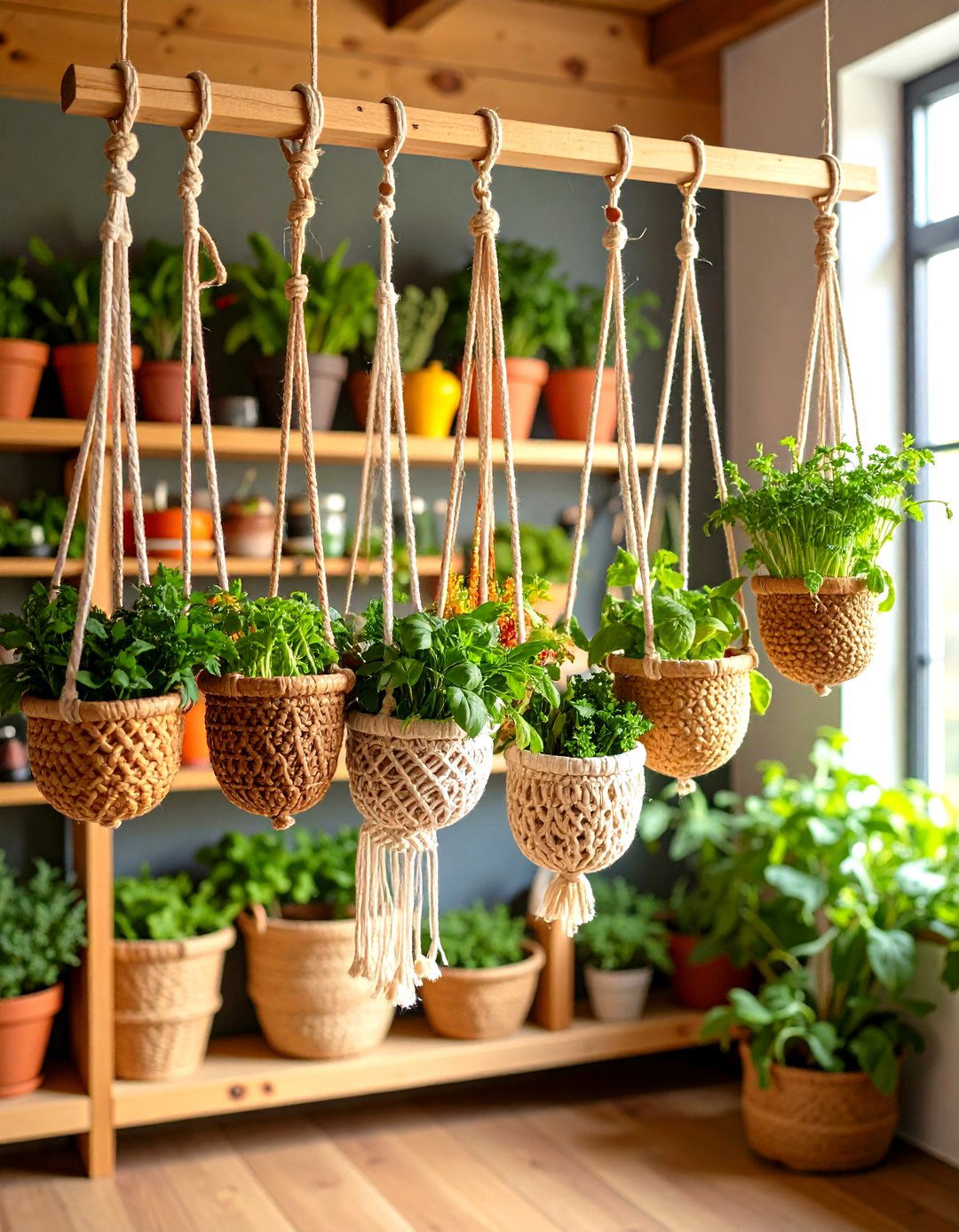
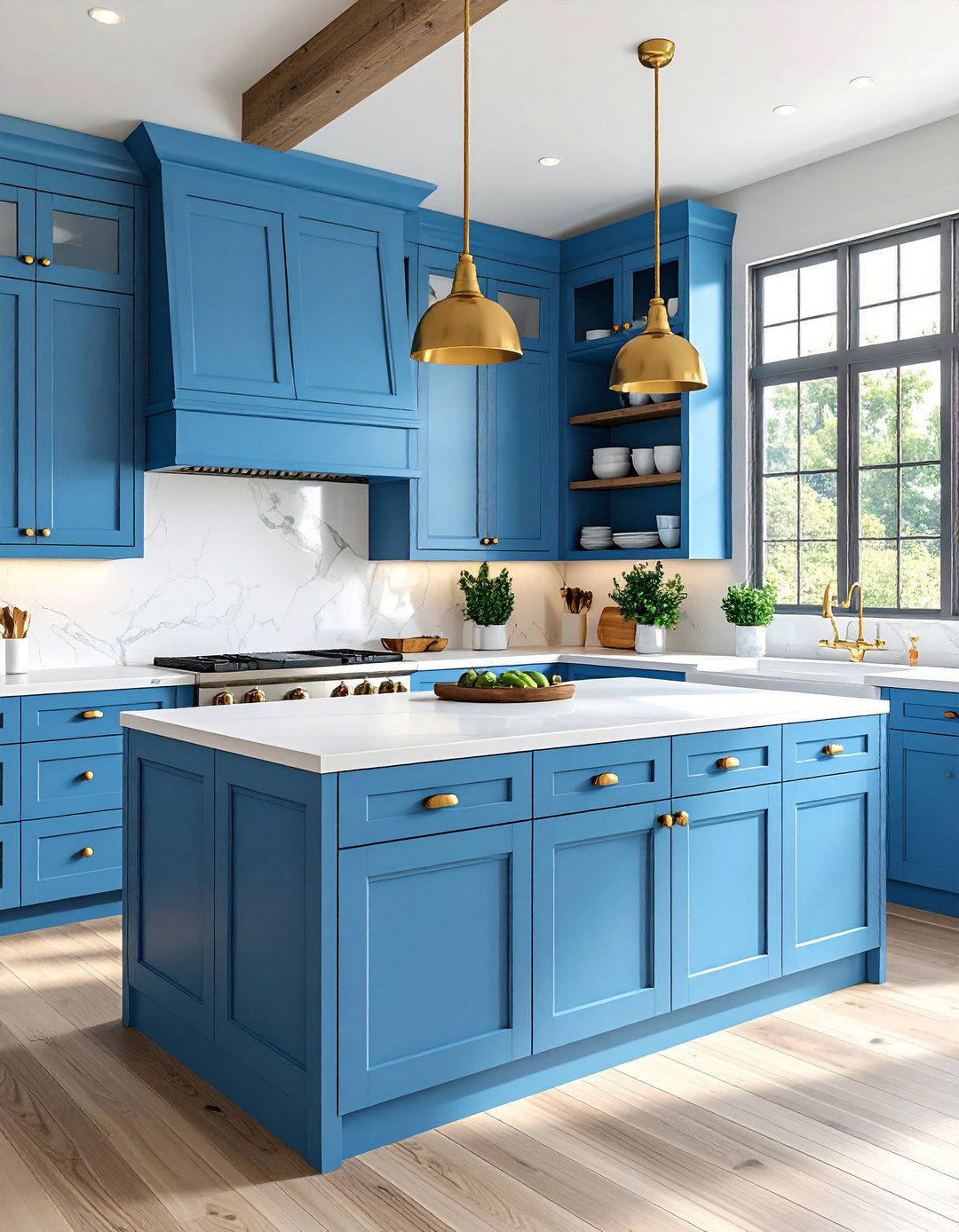
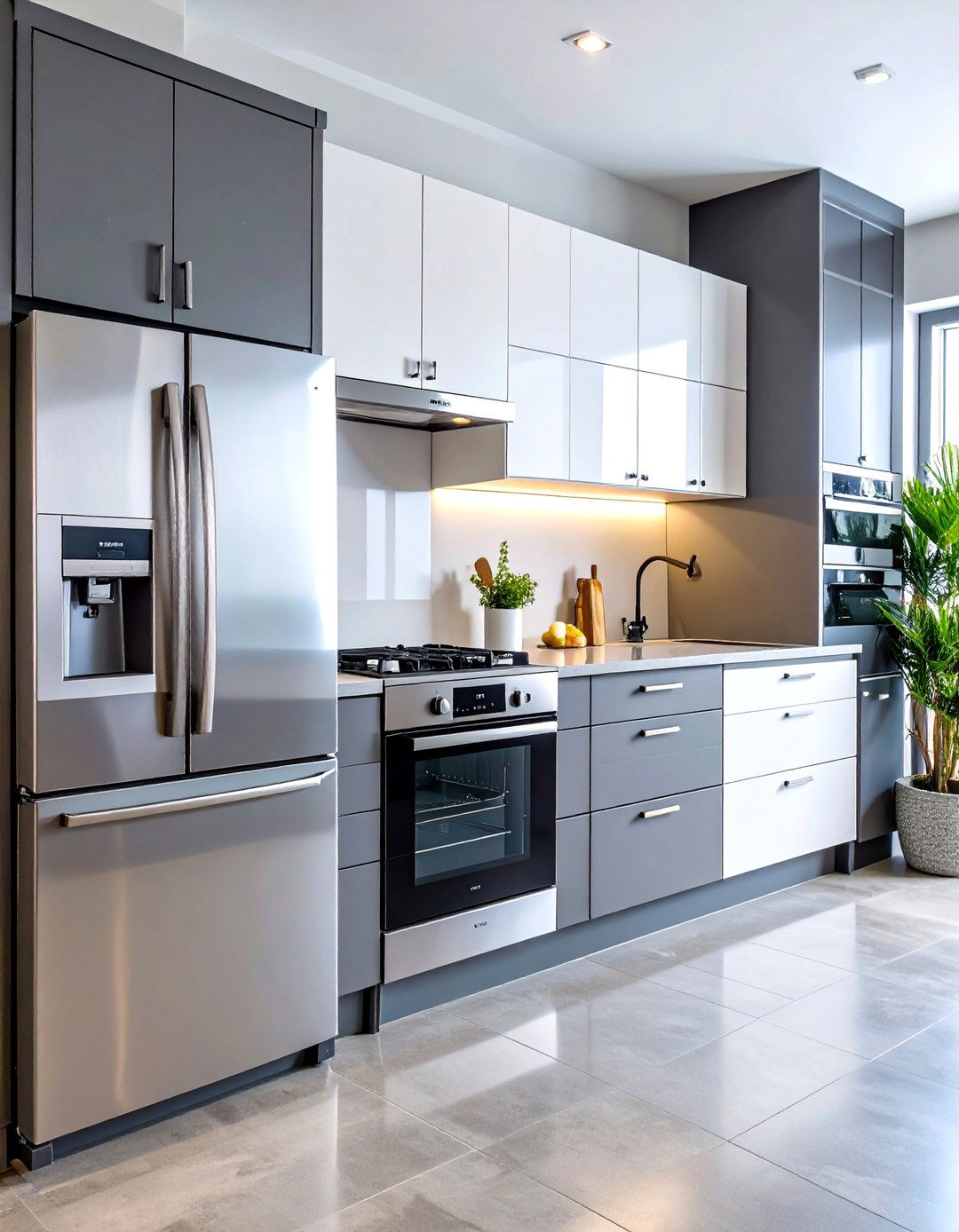
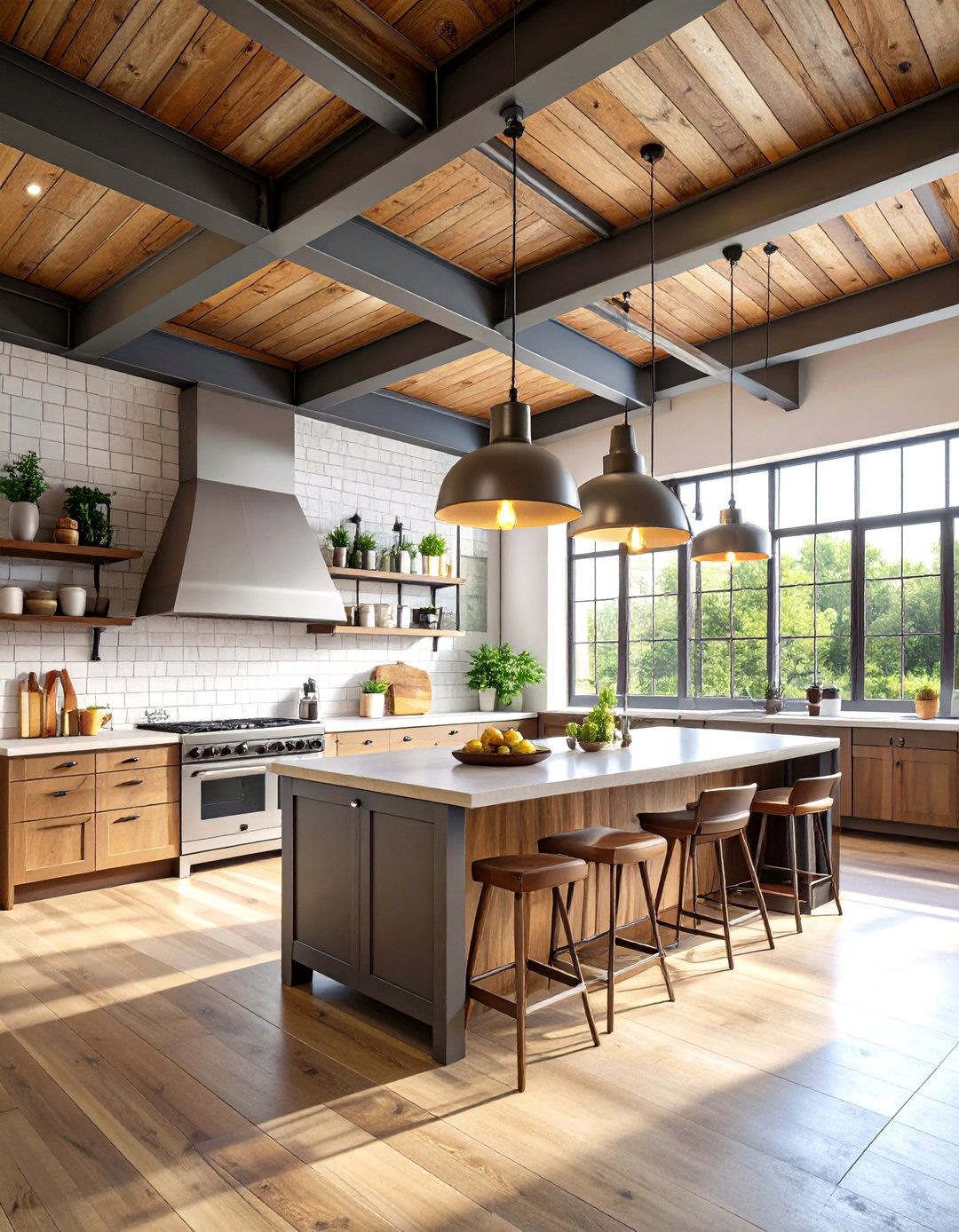
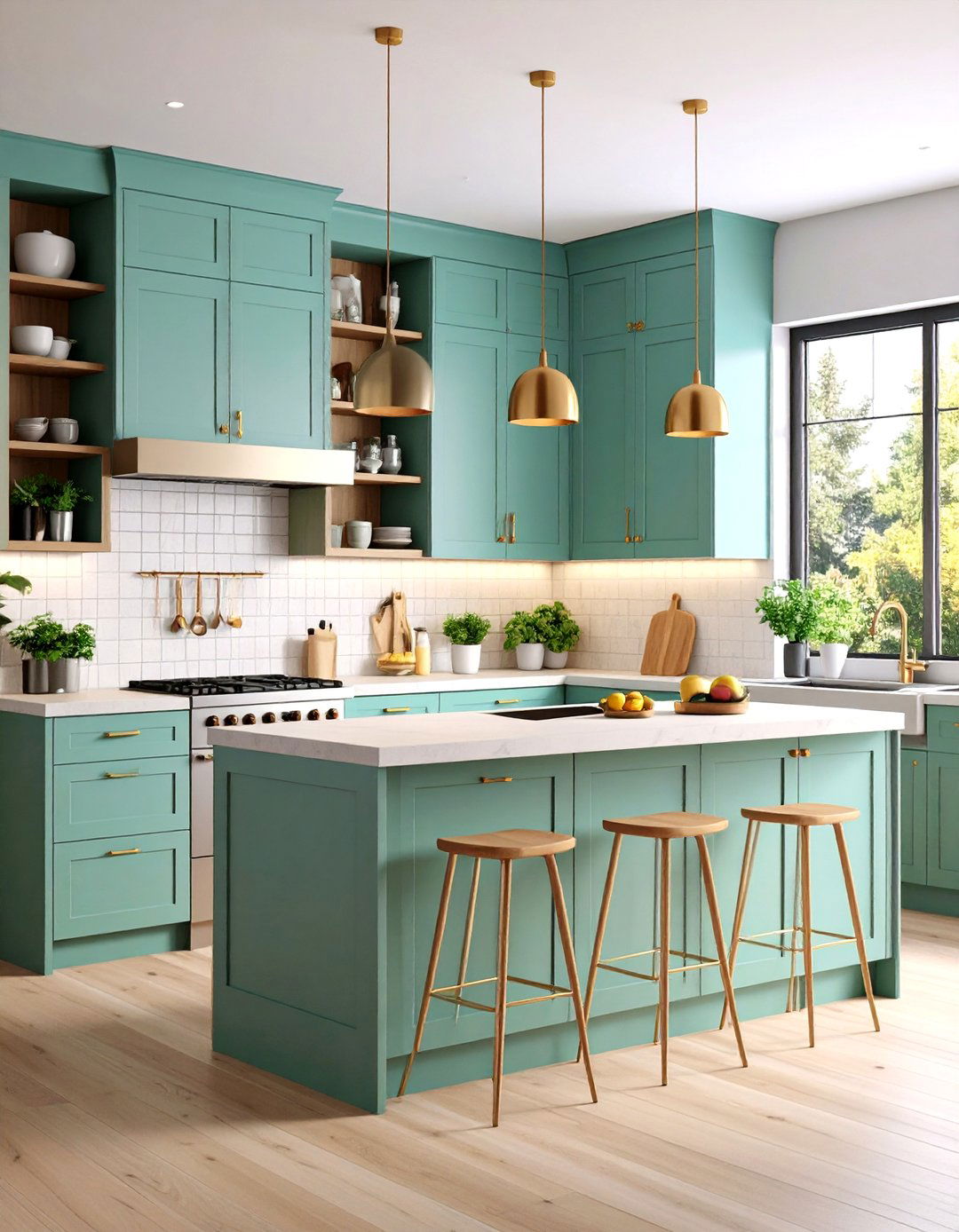
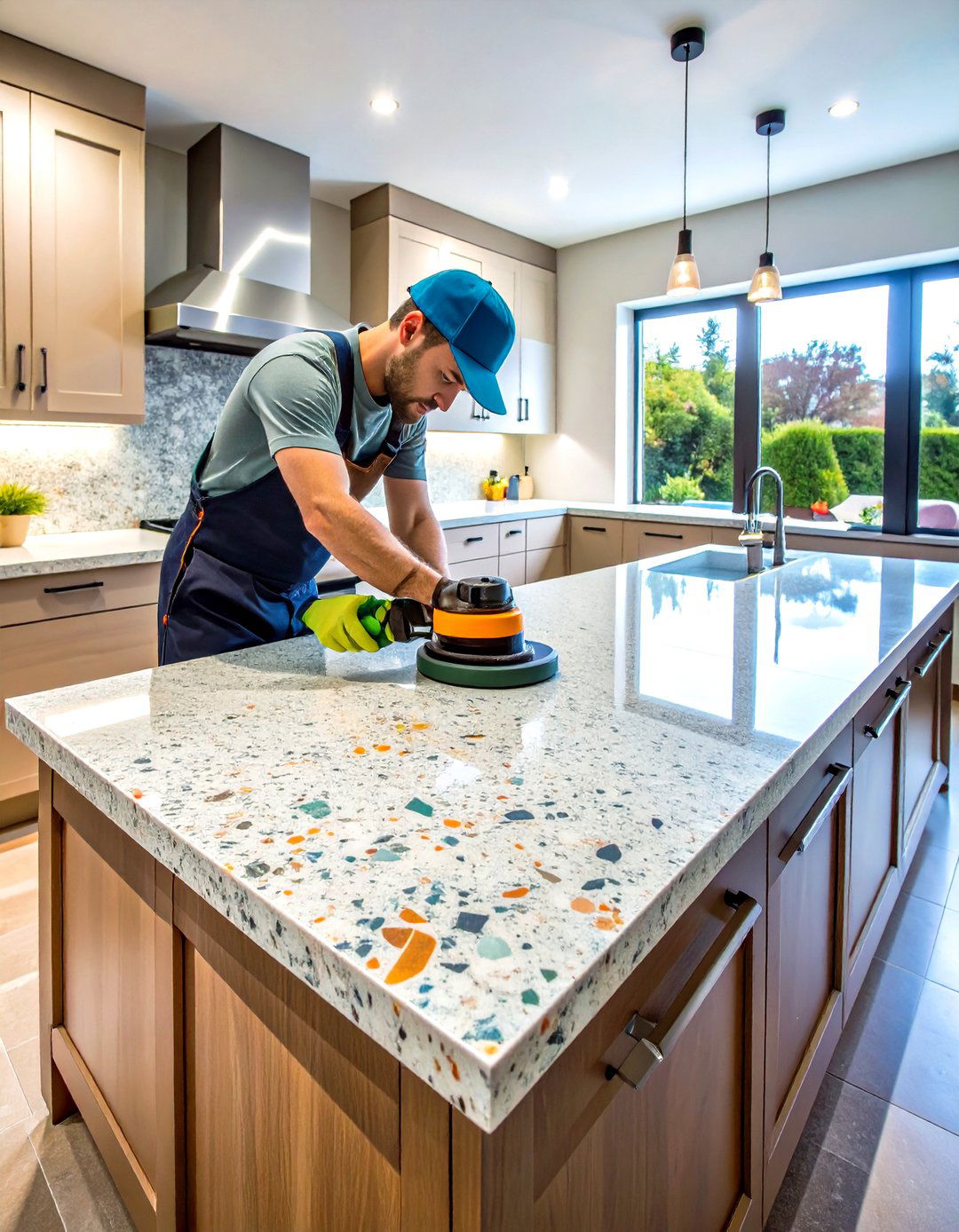
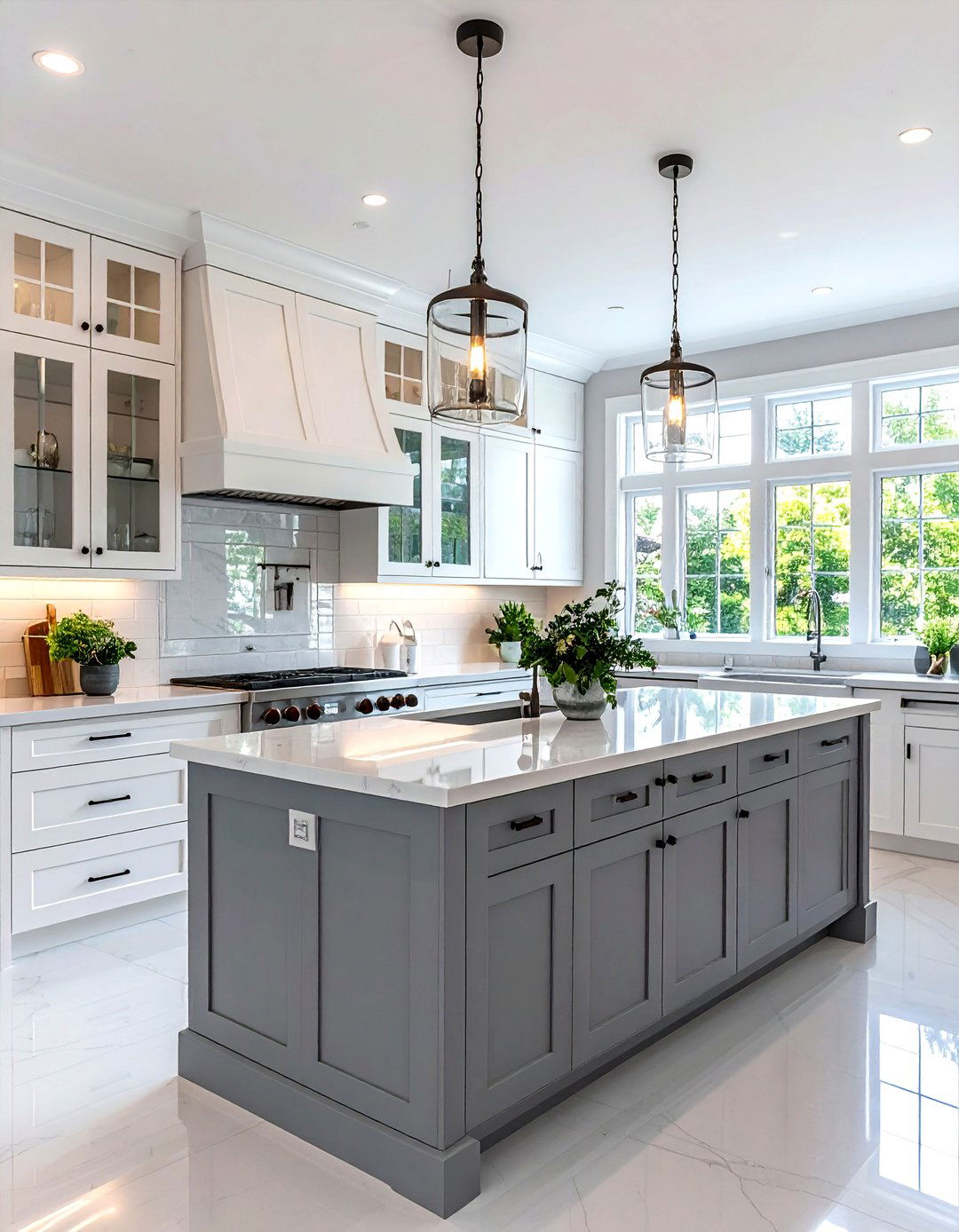
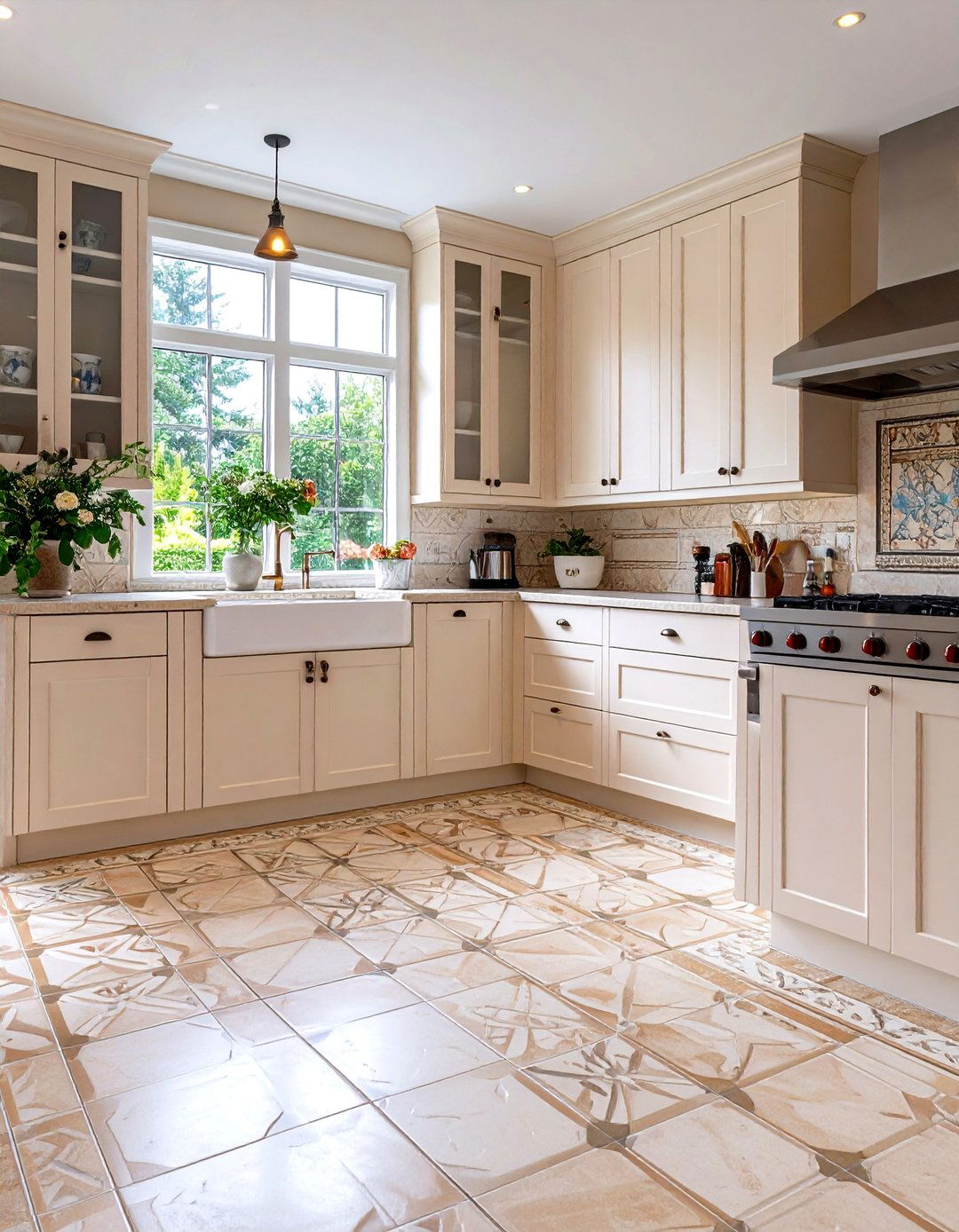
Leave a Reply